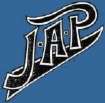|

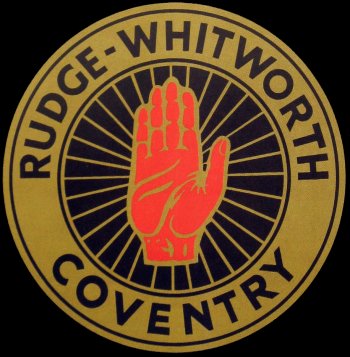
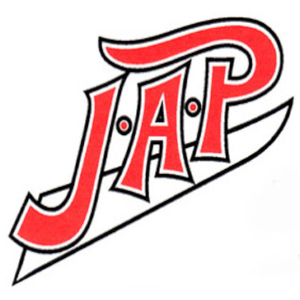


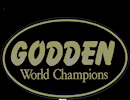


|
|
|
|
|
|
|
|
Pre
1928
UK
Speedway |
|
|
|
Early Motorcycle
Racing & Speedway's Origins
|
|
|
|
|
|
Ashtown Dublin 1902
Detroit 1915
USA Board Track racing early 1920's
Ascot USA 1925
More USA racing Pre 1928
Indian
Deagon Queensland Aus
Sand Racing
Grass Racing
Road Racing/TT |
| |
| |
| I started this page, in the hope that with your help, we can go back to an
era before the Aussies brought speedway to the UK in 1928. To be
eligible for this page an item has only to pre date 1928. Items can
include oval racing of course but also any type of sand, dirt, board and tarmac
racing. So please get behind this and let
me have your comments and photos. Maybe, in time this page will
explode a few myths I hope, surrounding the origins of Speedway Racing. |
| |
| |
|
|
|
|
|
|
Winchester
Indiana
USA
|
| |
|
Bill Holder says: John-I am a motorsports
writer from Dayton, Ohio and am currently doing an book on Winchester
Speedway in Indiana. The famous oval track will celebrate its 100th
anniversary in a couple years. I am aware that there was motorcycle racing
on the half-mile dirt track which lasted from 1914 and into the 1930s. I
have not been able to find anything about those activities. Have you ever
heard of any motorcycle dirt track racing during that time period at this
track? |
| |
| John says: I don't know where the
following photo came from but I was told it was taken at Indianapolis and
judging by the bikes it will be 1910-1920 ish? |
| |
 |
| |
|
|
|
| |
| |
|
Ashtown (Dublin)
1902
|
| |
 |
|
Courtesy George Kearns
|
|
|
|
George says this was a cinder track.
|
| |
| The organizers of the 1902 Ashtown race the "Motor Cycle
Union of Ireland" was no back street affair as its President was none
other than the tire magnate Boyd Dunlop. The M.C.U.I was regarded as
such a responsible body that it was approached by the organizers of the
worlds 4th Gordon Bennett race, which could not take place in Britain
because of its speed restrictions, to oversee the race in Ireland. |
| |
| |
|
| |
| |
|
USA Board Racing
|
| |
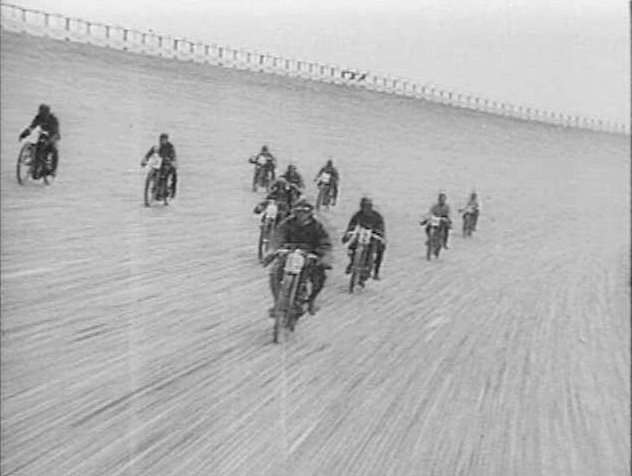 |
| |
|
|
|
|
Early 1920's USA: This was maybe More Nascar for bikes than speedway, these bikes were lightened by stripping away all components that weren't
necessary including lights, brakes and gearboxes. The machines bore
a resemblance to the Dirt Track bikes in use a few years later.
|
|
| The American "Board Tracks" like the one
in the above picture must have used up a small forest of trees in
construction, but timber was plentiful in the USA/Canada so it
must have been financially viable to make them in the early part
of the 20th century. They resembled the modern cycling
velodromes but were bigger. |
| |
| More USA Board Racing |
| |
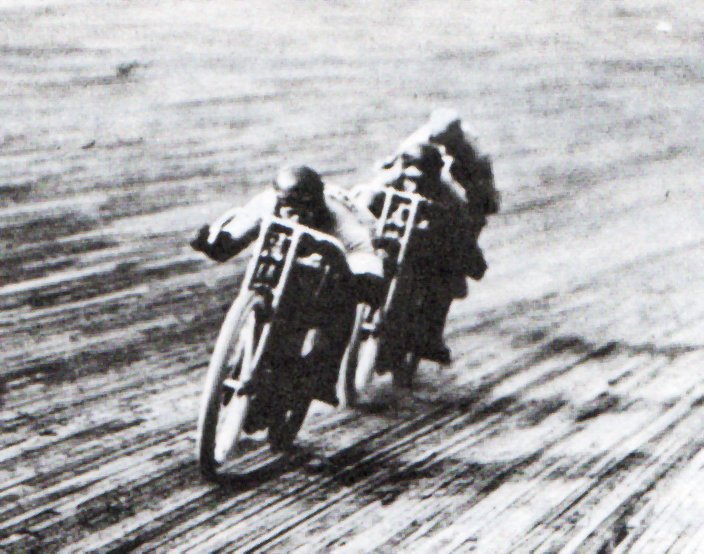 |
| |
| More USA Board Racing. A close look at the handlebars reveals that the
bars used later by Dirt Track Harley's and Indians handlebars were
identical to those shown above. |
| |
| |
| 1921 Harley Board Racer |
| |
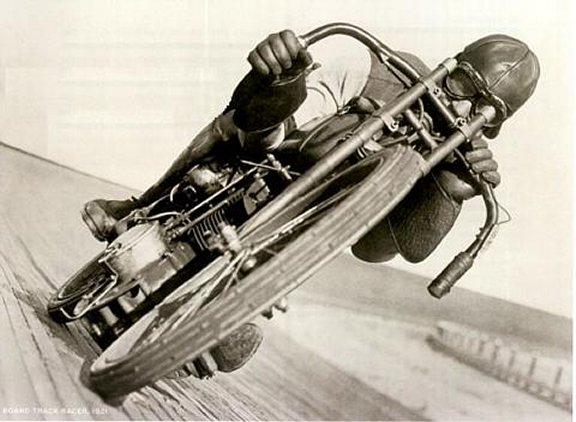 |
|
Courtesy of Steve Magro. Check out
Steve's website
Steve
Magro |
| |
|
I think it is quite likely that
Speedway actually started in the USA before it got underway in Oz.
What are your views
John
This close up of the bike
shows they had no clutch lever therefore no clutch! I
understand moving a board racing bike around, entailed removing
the chain first.
|
| |
| |
| Dave Gifford's Board Track Photos |
| |
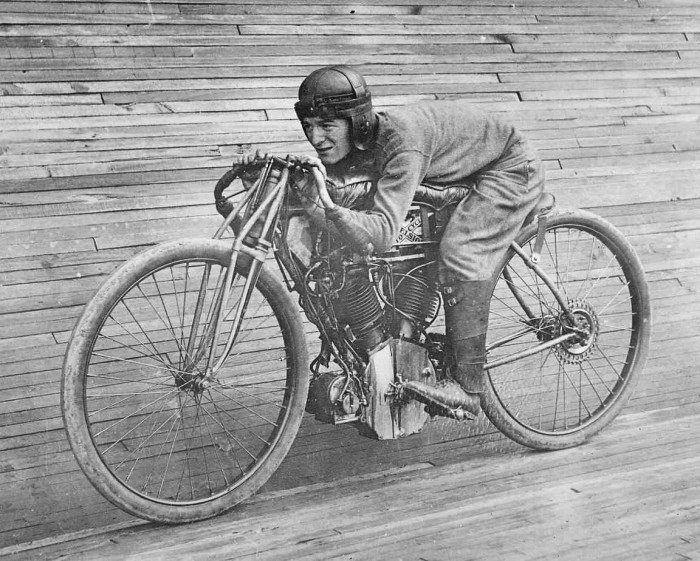 |
| |
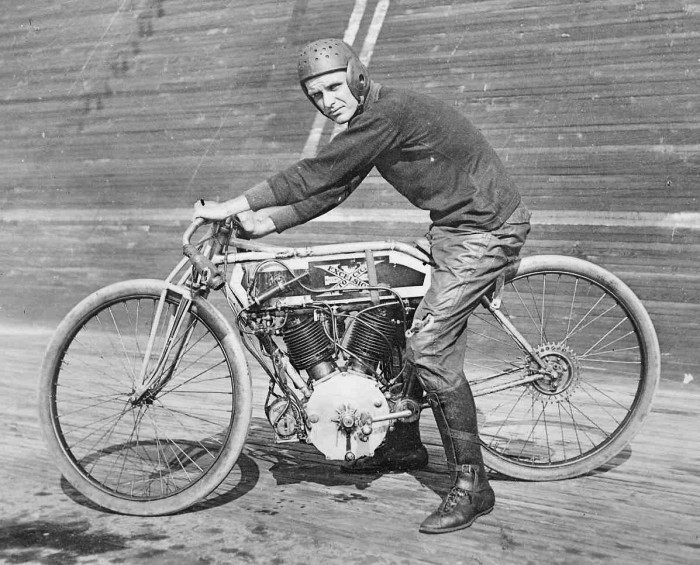 |
| |
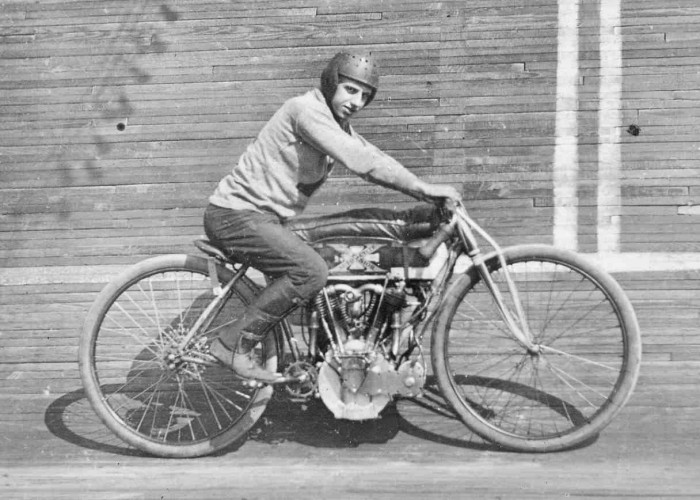 |
| |
| A mighty V Twin but it wouldn't have gone
anywhere as it doesn't have a final drive chain! As these
bikes had no clutch the only way to push them around easily was to
disconnect the engine from the rear wheel by taking the chain off. |
| |
| Dave Gifford says: I am pretty sure the
board track riders name is John Hoefeler. The machine is an
Excelsior (or Big X) V Twin of about 980cc, no clutch, no gears,
no brakes, no throttle and the carbs locked at wide open and only
a de-compressor lever to move and start the bike and an ignition
cutout to stop it! I think the photo dates from about 1914. I have
attached a couple more pics taken at the same time. giffy |
| |
| Board racing bikes are so like Dirt Track
machines I am sure the riders would have found it relatively easy
to move between the two disciplines. |
| |
| |
|
| |
| |
|
Australian
Motorcycle History |
| |
| Australian Grand Prix, Tourist Trophy and Dirt
Track/Speedway. Aussie Rob Rowe has been in touch and he
has this to say: |
| |
| When did it Begin? |
| |
| Australia has a very
rich motor sport history, but just when the first significant
events were actually conducted has become blurred over the last
one hundred years or so.
People’s
memories, urban myths, exaggerations, missing archives and
occasionally just plain lies have meant that the correct dates and
places of events have become confused and unreliable over time. |
| |
| Recorded history is
often just the considered opinion of the historian, sometimes
flavoured with a bit of parochial bias. Sometimes it is recorded
as what the historian thinks should have happened or could have
happened if circumstances were just a little bit different. |
| |
|
It now seems that the
first Australian Grand Prix for Motorcycles was run and won at
Yetholme on the 5th October 1914. The winner was Edgar
Meller riding a 2 ¾ Douglas In a time of 3 hours 21 min and 48sec |
| |
| Research by Bob Shannon |
| |
| The first Australian TT
for motorcyclists was held in Goulburn on Easter Monday, 1914, it
was won by Harry Jenkins 7 hp Indian |
| |
| Research by Wayne Adams |
| |
| The first Motorcycle
Speedway event in Australia was held on New Year’s Day, Tuesday,
1st January 1901 at the Sydney Cricket Ground. Advertised as a
Night Cycling Carnival with the first race at 6pm and the last
race at 10pm the feature race, over 2 miles, was won by J Green in
a time of 5min and 2 sec. The four motor cycle competitors all
rode tricycles. The fastest push bike event of the carnival was
won at a speed of 24mph, slightly faster than the motorcycles. |
| |
| Note; Federation day,
1st Jan 1901 was the first day of the Commonwealth of Australia,
the six States were independent before that date. |
| |
| Research by David
Manson |
| |
|
The Sydney Morning
Herald of 11th of November 1902 reported on “The first
ever race for Motor Bicycles” won by RA Mills adding that “they
should look especially well at night carnivals” |
| |
| The Sydney Morning
Herald, 6th January 1903 reported on “Racing By Night” with Elliot
winning at a speed of 43 mph on his Massey–Harris with 6hp Buchet
engine. It was reported that “about 20,000 people assembled at
Sydney Cricket Ground---the grounds again presented a brilliant
appearance being well illuminated.” |
| |
|
he Sydney Morning
Herald of 3rd June 1905 reported on the meeting run by
the Pioneer Motorcycle Club at the New Sports Ground with machines
whose names that would become familiar; Motasocoshe, Buchet,
Minerva, Knowles-Buchet, Surrey, Sarolea, Clemant Garrad, Marsh,
De Dion. |
| |
|
The Referee 23 October
1907 report was headed “Motor Cycling” giving results of
events conducted by the
Pioneer Club at the Sports ground. |
| |
|
The Sydney Morning
Herald on 11th February 1909 that “A novelty in the
shape of a motor car race aroused considerable interest” The race
was between two Fords ( 15 hp N, S, R, S or SR models not T,s)
driven by F and H Natrass. |
| |
|
The Referee reported
that Auto Cycle Unions events held on the November 15th
1909“were held on the cinder track which was rather loose”
The seven furlong grass track at Canterbury Park saw Frank
Mellor win an all powers race on his 2 ¾ Douglas on 13Th
December 1913. |
| |
| Research by Brian Lear |
| |
|
The Newcastle Morning
Herald, 4th November 1905, noted that a Cycling and Motor Carnival
would be held on Monday 13th November, 1905 at the
Rugby Football Ground, with “The Whole of the Track Grounds
Beautifully illuminated”
|
| |
|
Note, this was a banked
velodrome, probably asphalt.
|
| |
|
The Newcastle Sun 24th
Feb 1920 announced that “a meeting would be held at the Automobile
Rooms, Bolton-street to discuss the matter of a central ground for
Newcastle having a speedway for racing contests and motor
cycles, motor cars and cycles.” |
| |
| Research by Brian Lear |
| |
| Johnnie Hoskins is quoted
as saying “In mid-summer of 1923 the first “Electric Light
Carnival” with “dancing on the green and motorcycle racing” was
staged before a huge crowd. |
| “Soon we changed the name
to Speedway and ran weekly.” |
| |
| Research by Brian Darby |
| |
| A Google search of
John Skinner's “Defunct Speedways” will lead to photographs of Dublin’s Ashtown
half mile cinders circuit featuring a one mile event for motor
bicycles in 1902 and the photos from Detroit clearly show
motorcycle “speedway” riding in 1915. |
| |
| Research by John Skinner |
| |
| So what does this all
mean? Well it seems that 2014 is
the Centenary year of two of the most important Road racing events
on the Australian Motorcycling Calendar and Australians generally
should be very proud of the contribution that motorcycling has
made to this countries sporting culture. |
| |
|
With well over one hundred
years of Australian motorcycle racing
history one can only wonder
why Australian riders like
the
Duggans, Van Praag, the Hintons, Brown, Ahearn, the Crumps and
Sanders are not household names whose achievements should be part
of the everyday conversation like Olympic swimmers, cricketers and
tennis players.
Rob Rowe
2014 |
| |
| |
|
| |
| |
| Doug McFarlane's Comments |
| |
Hi John,
I have found a few items that might be
of interest to you for your site on
the early days of speedway
-
Found details of how to slide a
bike round a dirt track, like the
US cracks do, in an Australian
newspaper some weeks before the
first Hoskins meeting at West
Maitland. Plus a reference in
another paper from Australia
calling the technique the
'American Skid', which all seems
to confirm that broadsiding came
to Australia from the US
-
Plus I found this interesting
piece from Sydney on the origins
of track sport in the country from
1938
-
It states that the sport developed
from road racing, but the sport
was generally out in the sticks.
In Sydney they wanted to bring it
closer to the public because at
the time few people had transport
and public transport was also not
good to take spectators to the
'venue'. Applications were made
time and again to have roads
closed off near Sydney but were
always refused by the council. So
they asked Victoria Park
racecourse if they could use their
track and permission was given as
long as a share of the proceeds
was given to charity. This meeting
proved such a success that a
second was held. After each
meeting the sale of motorcycles
increased tremendously. This led
to the construction of a dirt
track at Penrith on land owned by
the railway. It was also a success
and on the back of this US riders
including Paul Anderson,Paul
Remali, etc were invited over. The
invitations were made possible by
the number of sales by local
dealerships. The supply of
motorcycles couldn't keep up with
demand. The concrete track at
Marouba was built and a cinder
track at Royal Agricultutal
Showground and other tracks
followed such as Wentworth Oval,
Pratten Park,Newcastle and
Maitland.
regards
Doug
MacFarlane
|
| |
| |
|
| |
| |
|
Johnnie Hoskins
1924 Maitland
Programme
|
| |
| Johnnie gave this 1924 Australian programme to Reg Fearman
many years ago. It pre-dates speedway in the UK by 4 years.
British Speedway fans owe Johnnie a debt for bringing the sport to
our shores for us to enjoy. |
| |
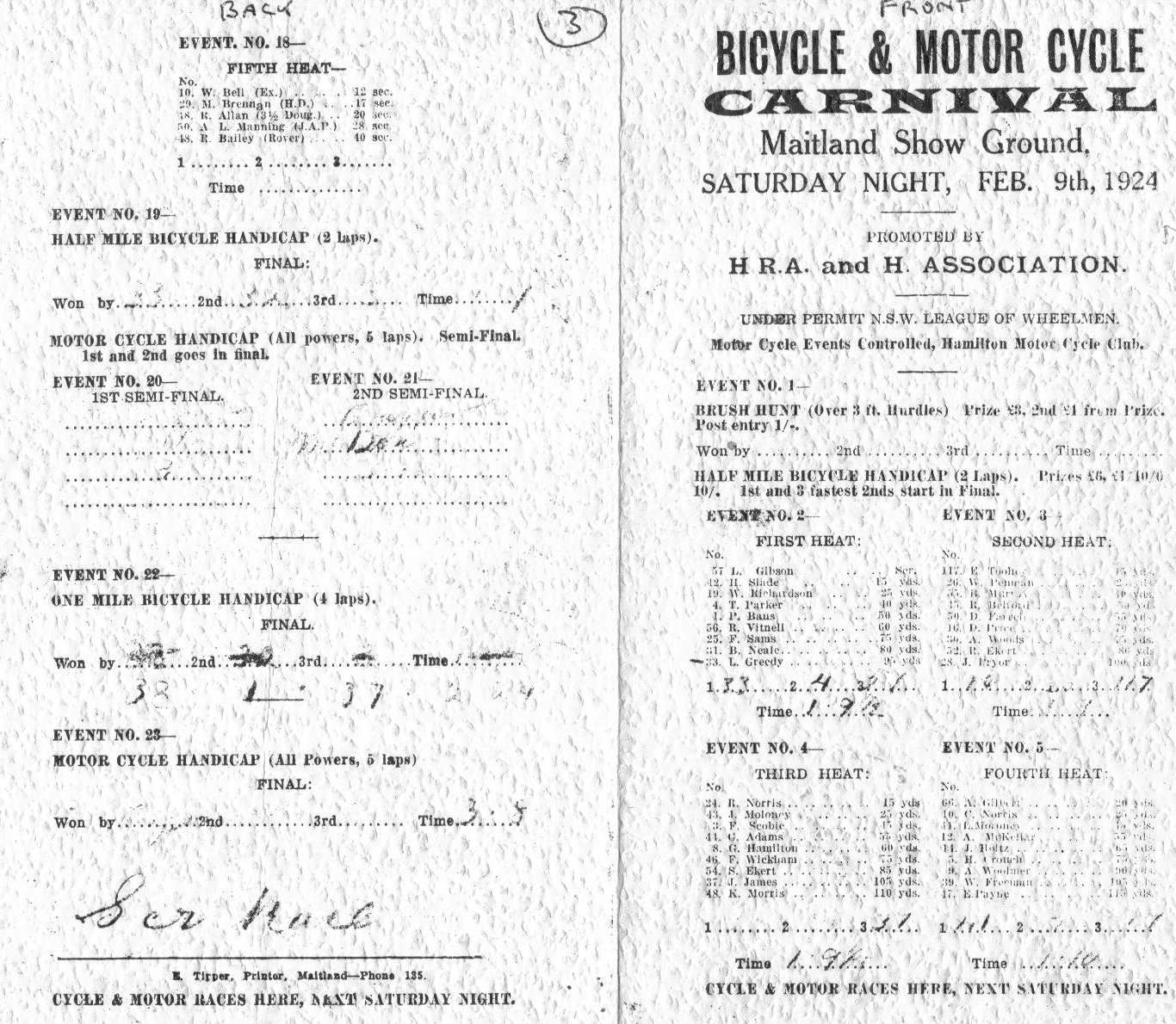 |
| |
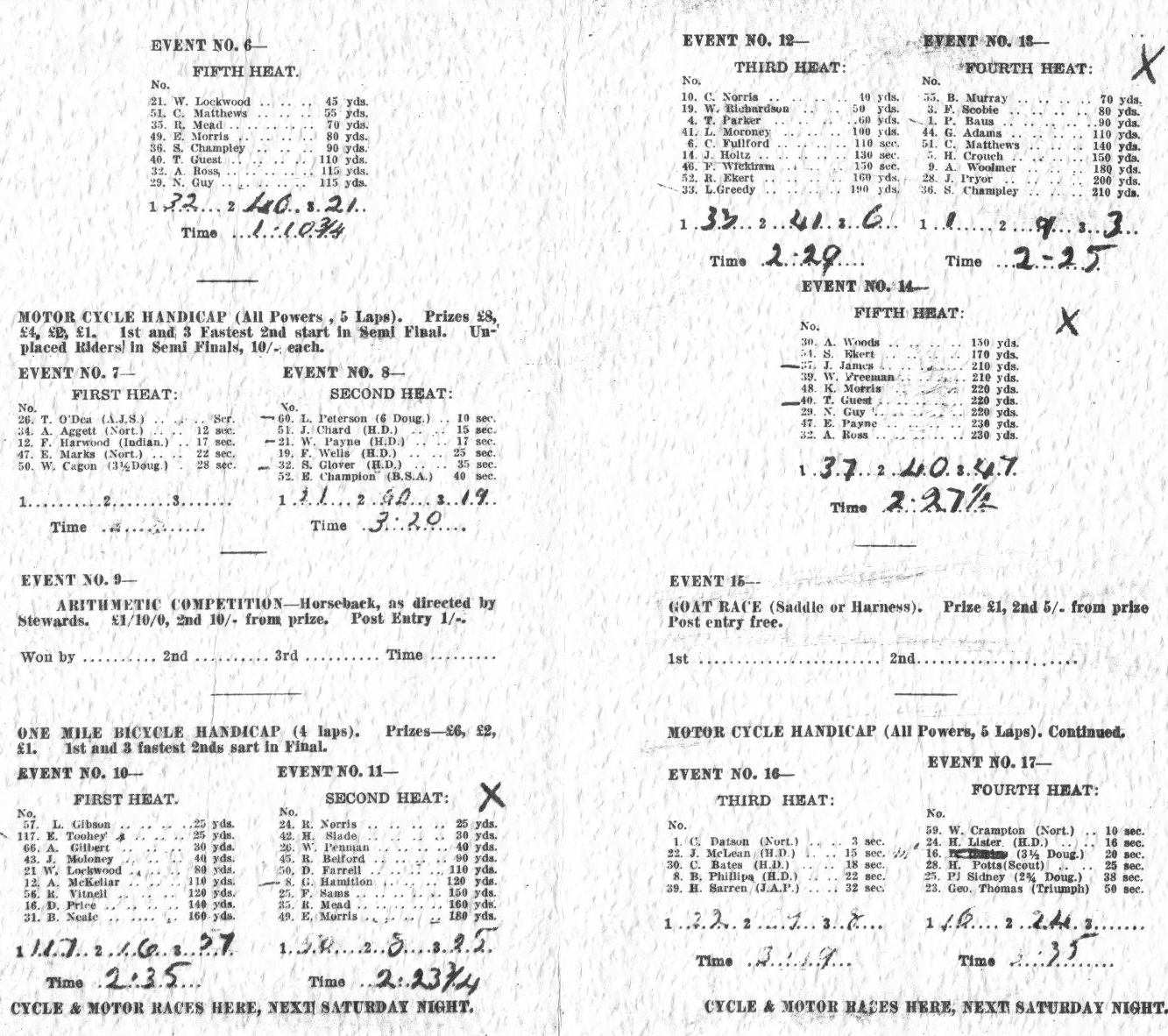 |
|
Courtesy of Reg Fearman
|
| |
|
The 1924 programme shows bicycle and motorcycle racing.
The term "Speedway" had not been coined then from the early days of Australian speedway
and when Johnnie arrived in Britain in 1928, the sport was called "Dirt
Track Racing".
|
| |
| |
|
| |
| |
|
1925 Ascot
(USA) Speedway
|
|
|
|
Frank (Tuffy) Jacobs
|
| |
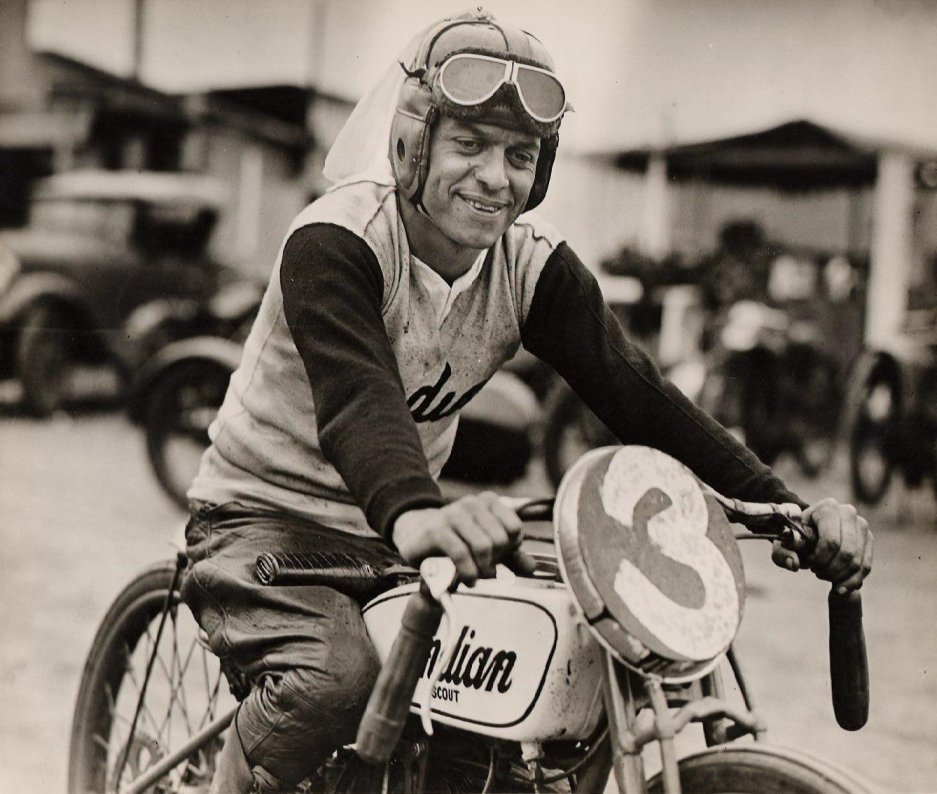 |
| |
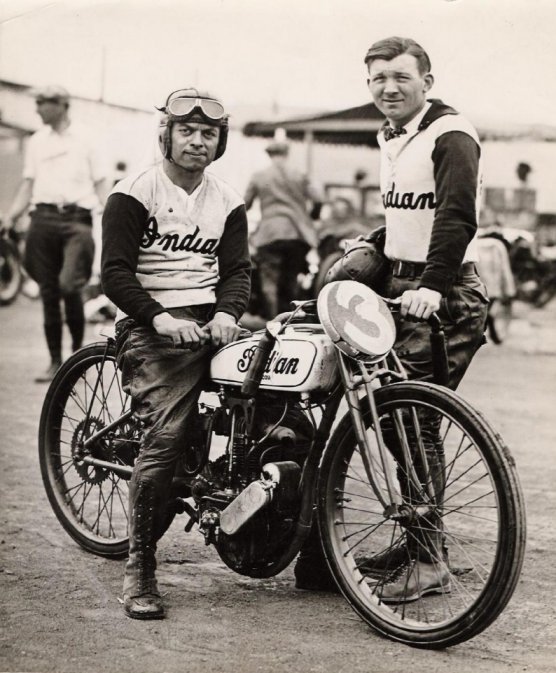 |
|
Pictures courtesy of Janice Engle
|
| |
| Janice
Engle says: The picture of my
Grandfather (Tuffy Jacobs) with Miny Waln was at Ascot Speedway in 1925 |
| |
| The early Indian and Harley Davidson machines favoured the "drop
handlebars" I will ask Janice where the "Tuffy" nickname came from |
| |
|
Janice says:
Hi John, Thank you for getting
back to me. My Grandfather’s Name was (Tuffiek) He took the name Frank to
Americanize his name. My Grandmother shortened Tuffiek by removing the K
at the end and called him Tuffie. He was full blood Lebanese. He
spoke Arabic, English, Spanish and Portuguese. Thank you so much, Janice |
| |
|
|
|
| |
| |
More American Racing
Pre
1928 |
| |
John says: I am interested in showing that
dirt track racing may not have started in Australia. It is, in my
opinion, more likely that the sports origins lie in the US of A.
A number of pictures from the USA sent by Cary
Cotterman,
an American, who has
been a good friend to this website. Cary's pics
etc follow below: - |
| |
| Cary says:
Dirt track motorcycle racing on oval-shaped tracks began in the U.S. as
early as 1901,(says Cary Cotterman), initially on 1/2-mile and 1-mile
tracks normally used for horse racing. If Los Angeles wasn't the first
place in the world such racing took place, it can certainly lay claim to
being among the very earliest. The first riders appear to have
negotiated the turns with both feet on the footrests (or pedals) of
their relatively low-powered machines, with their wheels in line, but by
1915 or earlier, photographic evidence attests that riders like Dave
Kinney and Maldwyn Jones had developed the technique of breaking
traction with the rear wheel and broadsiding around the bends. This
development was probably the result of riders' experience and
experimentation coinciding with the evolution of high-powered
motors. U.S. motorcycle manufacturers of the time, led by the giants
Harley-Davidson and Indian, encouraged and publicised racing for its
advertisement value, and by the early 1920s the sport had grown to
national stature. While the steeply cambered board tracks seem to
have held first place in the imagination of the public, dirt track
racing was a close second. |
| |
| Did American riders export dirt track racing to Australia in the
1920s? Probably not. It's more likely that early American
exponents travelled across the world to investigate a racing scene that
had already existed for a short time, albeit on a smaller scale than in
the U.S. When they arrived, they made a success of their more advanced
experience and techniques, similar to the way Ivan Mauger and Barry
Briggs looked in on the nascent speedway revival in California in 1968.
The sport probably began in the U.S. and Australia independently because
it is simply the nature of industrious, adventurous, curious people to
strip down their machines and see what they will do on a race
track. However, owing to the proximity and support of the motorcycle
manufacturers, the U.S. had the advantage. Dirt track racing started
there first, and more than a dozen years before the great Johnnie
Hoskins began promoting races in the U.K., American riders had
developed a sophisticated technique that included the most distinct
attribute of speedway--broadsiding. In contrast to the vast, relatively
sparsely populated, and still largely rural settings of both the U.S.
and Australia, the geographic compactness and dense population centres
of industrialized England in 1928 were probably important factors that
led to the almost instantaneous combustion of the sport there into one
of the leading mass entertainments of the 1930s. |
| |
| Thank you Cary. Your views are put most sensibly and
America's claim to be the first centre of the sport remains in my opinion
to be the case. Maybe Australia and the USA developed their versions
alone with a coming together in Britain in 1928 and the sport now known as
speedway was as much a British invention as the Brits developed the raw
material into a watchable sport. What a debt is owed to the US and
Australia for beginning a sport that the British took to their hearts.
Speedway was born either in the USA or Australia but has been enjoyed here
in Britain since 1928 as if it was our own. |
| |
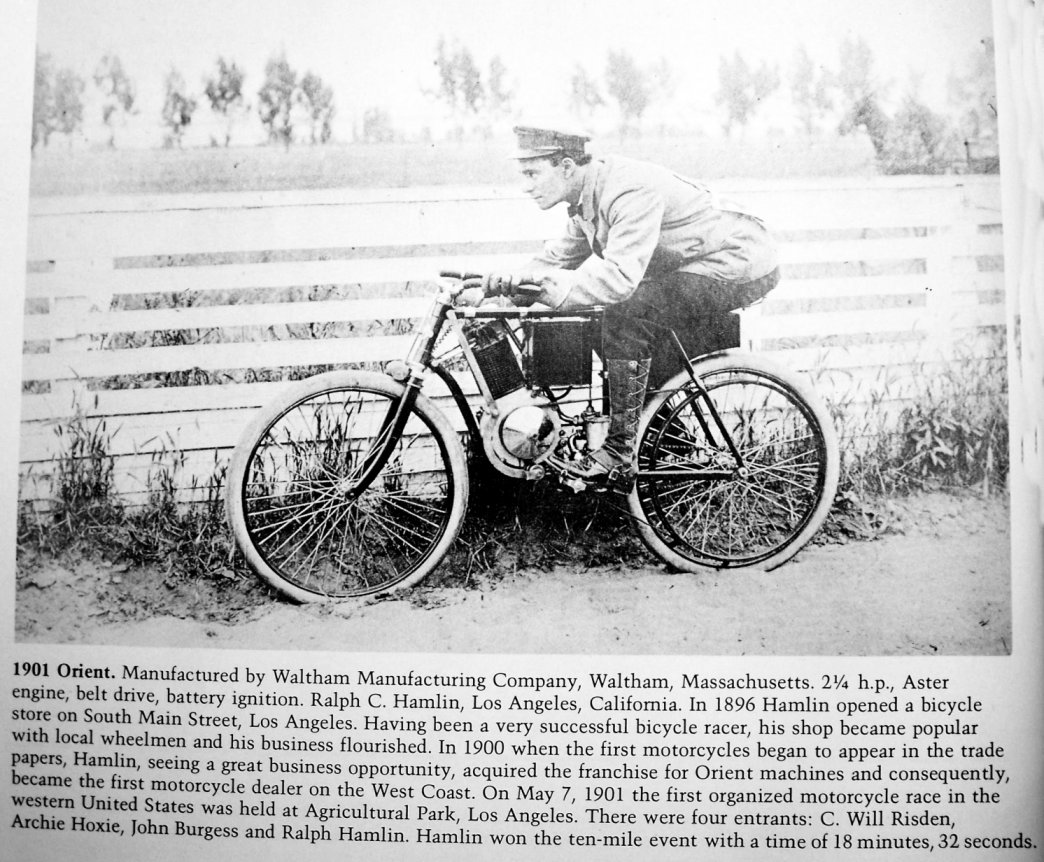 |
| |
| 1901 Aster dirt rack racer. This and the following pictures come from the book "American
Racer" : 1900-1939. If the items are still subject to copyright I will
be happy to amend or remove the items or publicise this great book. Send
me an email if you are the owner of these items.
John |
| |
| Ralph Hamlin is credited with winning the first dirt track race known to
be held in the western U.S., on May 7, 1901 at the Agricultural Park in
Los Angeles. This 1-mile dirt horse racing track was located at the future
site of the L.A. Coliseum, where the 1932 and 1984 Olympic Games, and the
1982 World Speedway Final were held. This is the earliest reference in the
book to dirt track racing in the U.S |
| |
| John says: Was it "Dirt", soil/come grass or was it a specially laid dirt track
containing shale or cinders? Does it matter what the track was made
of? Dirt is a loose surface like cinders after all. The Americans
were racing motorbikes around this oval back in 1901 so does it qualify as
the first ever Speedway type racetrack? I cannot imagine these early
bikes developing enough power to broadside the corners, that will come
later. |
| |
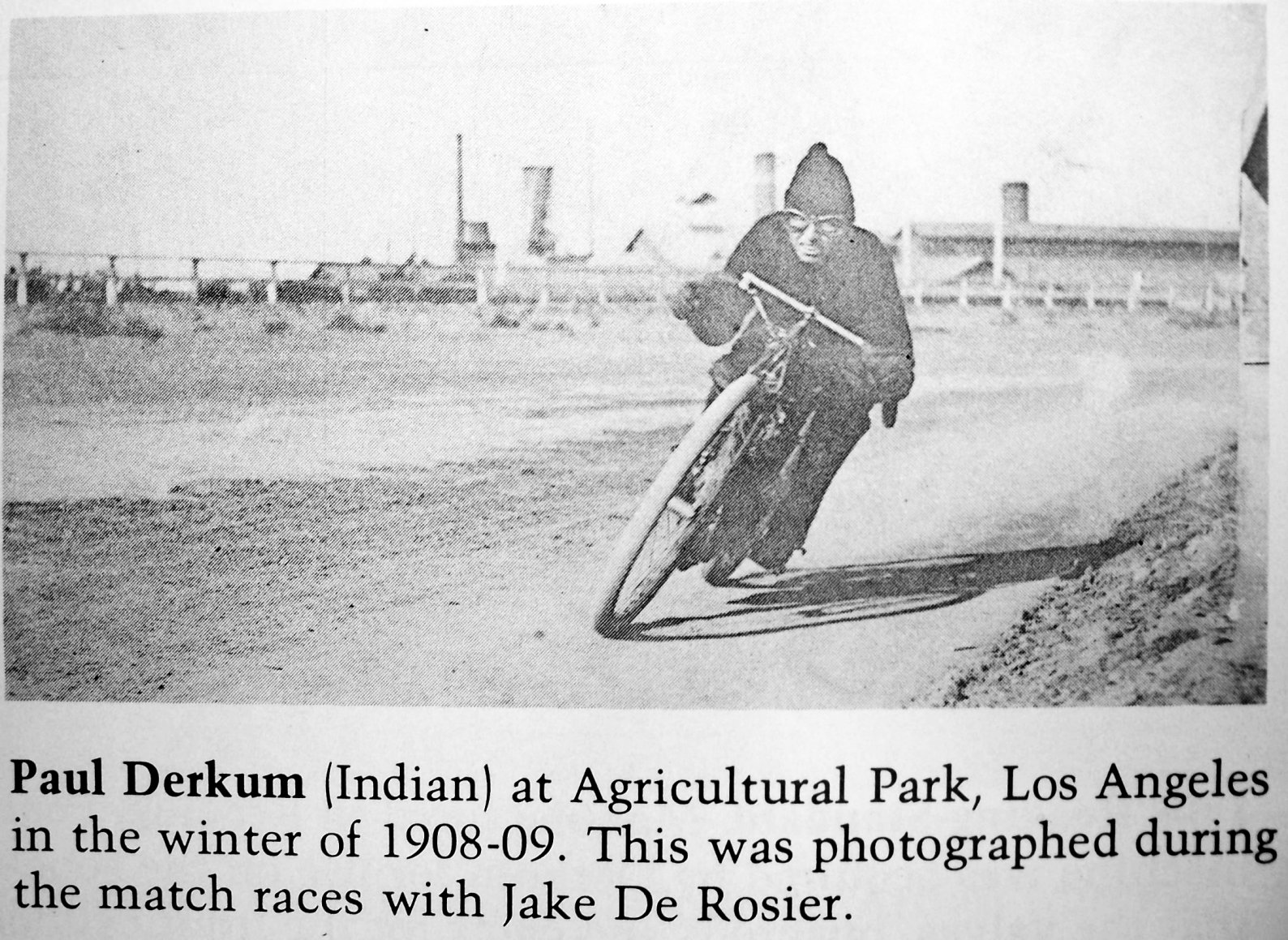 |
| |
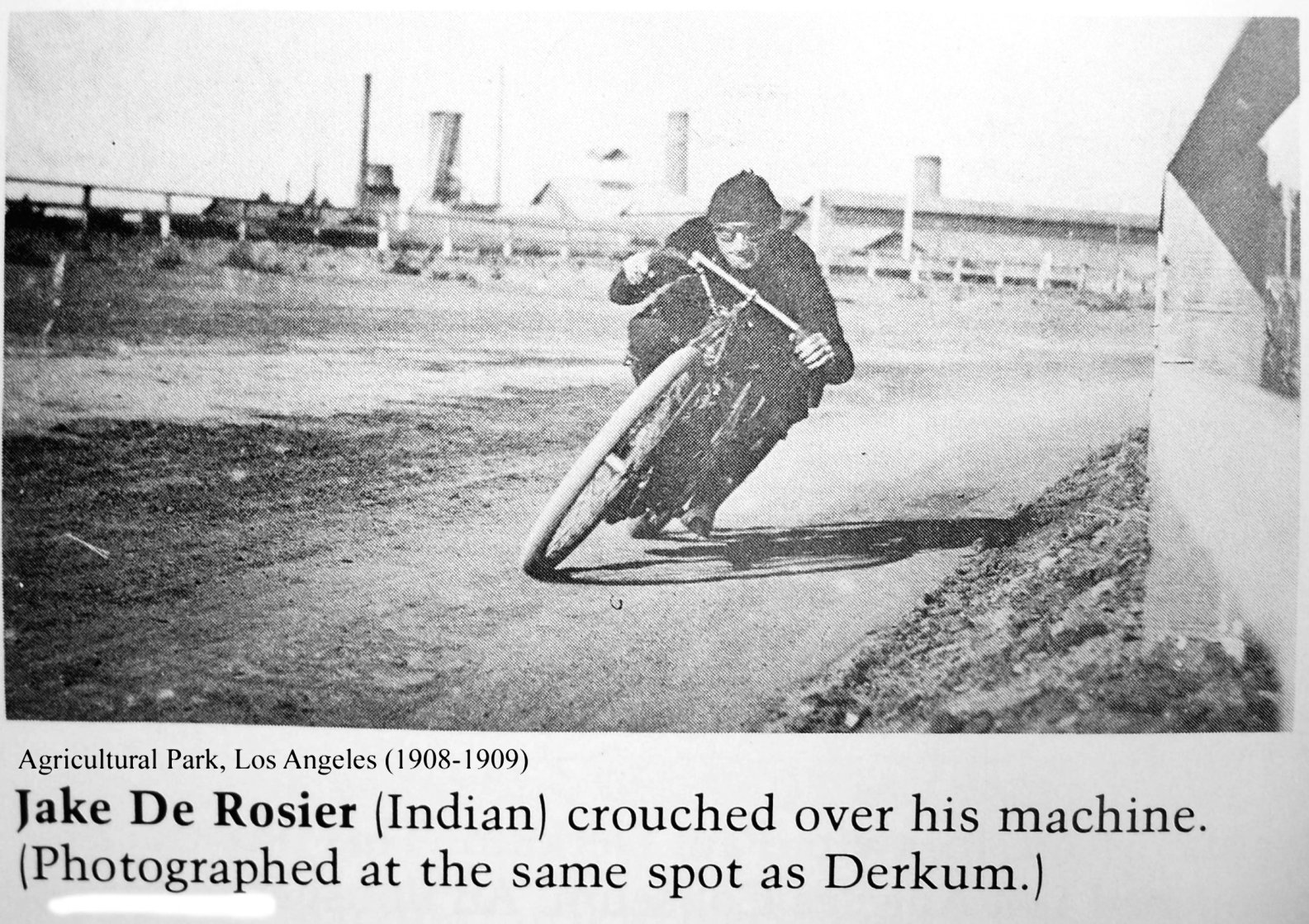 |
| |
|
This picture really looks like it depicts dirt track racing although the
back wheel is not breaking away. It was taken in LA 1908/09 Maybe
Broad sliding had not been possible with the power output of these bikes
being so low
|
| |
| |
|
| |
| |
|
1915 Detroit
|
| |
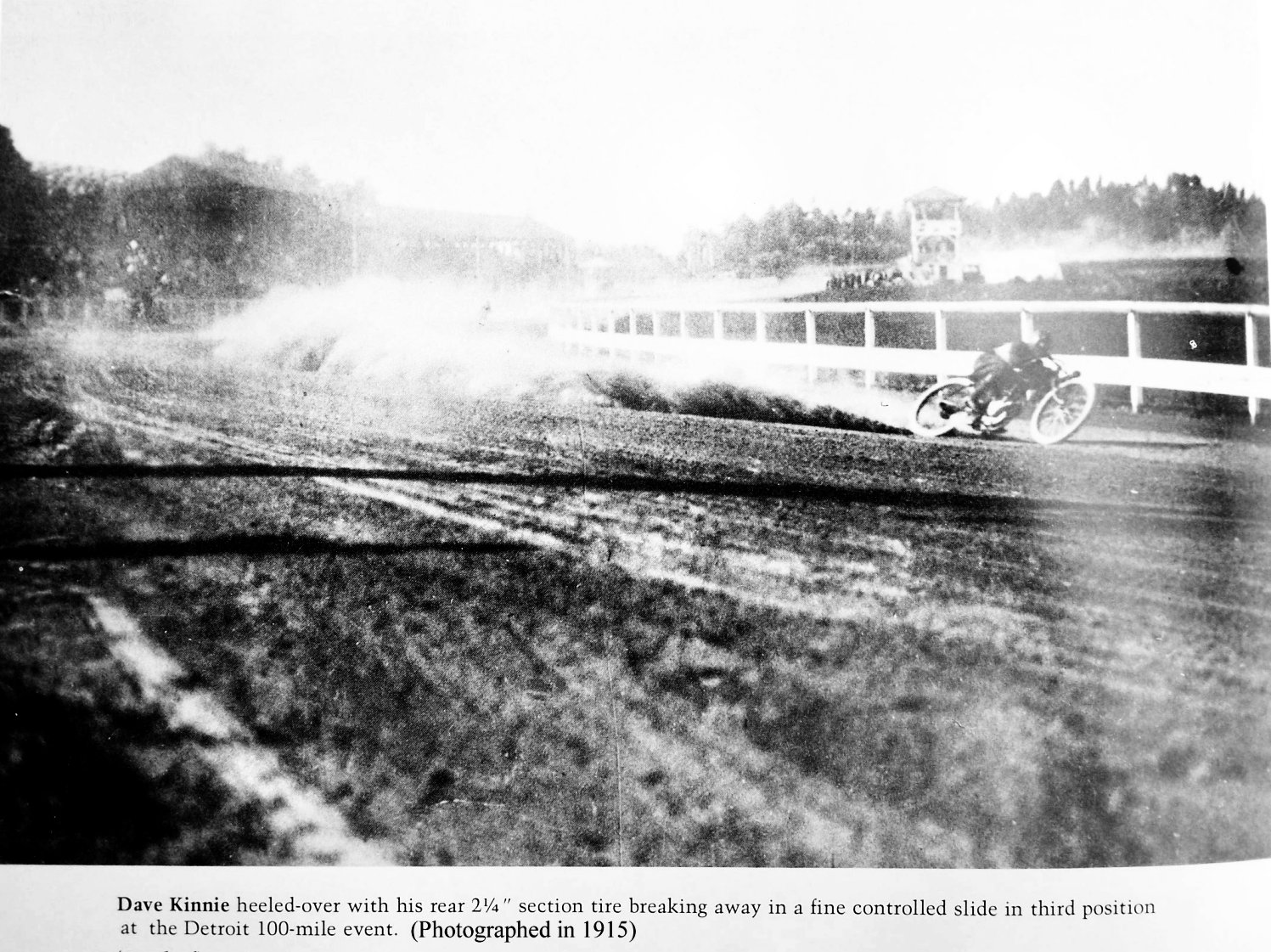 |
| |
|
This is Dave Kinnie in Detroit circa 1915 on a corner, riding a Cyclone,
a lesser known American bike, with his rear wheel throwing up a plume of dirt, Surely Dave was a
"speedway rider" back in 1915? Why not give the US it's due and say that
this is early speedway? Where are the earlier photos from Australia,
South Africa or Ireland? If you have any send them to me.
John
USA is my bet for the origins of our sport.
|
|
|
|
|
|
|
|
|
|
|
Don Johns |
|
|
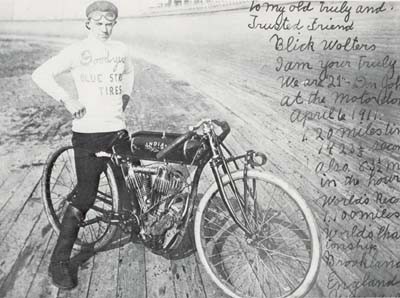
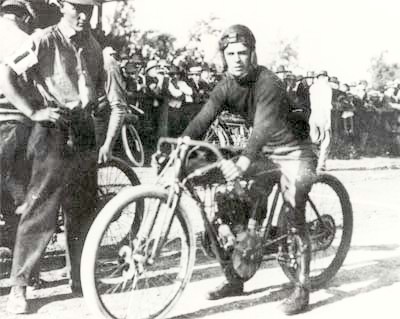 |
|
Courtesy of Norman Jacobs |
|
|
|
Norman Jacobs says: Don Johns started
around 1909 and won the National Dirt Track Championship in
Chicago in 1912. He may have been the first proper
"speedway" rider. A contemporary description of him says: “Don
Johns preferred to barnstorm the 1-mile dirt track circuits of
California and the Midwest, gaining experience as well as a
reputation as the hardest fighting rider in the no-holds-barred
game. By 1914, Johns had improved to such an extent that the
Excelsior could not hold him. He would ride the entire race course
wide open, throwing great showers of dirt into the air at each
turn.” How else could you throw great showers of dirt into the air
on the bends if not by sliding?
|
|
|
|
He was followed shortly afterwards by
another American called Albert “Shrimp” Burns who was killed in a
track crash on 14 August 1921. Part of his obituary written by
C.E.B. Clement, which appeared in
Motorcycle and Bicycle Illustrated
reads, “I strolled down the track to
watch him take the turns. Here he came with that motor humming a
great tune and into the turn he went. Watching him handle that
machine in the long slide all the way around, I saw in fancy, the
then great battler of the day, Don Johns. For Burns was holding
the pole and fighting the rear wheel in a manner that very closely
resembled the work of the then known hardest fighter of the racing
game." |
|
|
|
|
|
| |
| |
| Maldwyn Jones 1916 |
| |
| The "First" Speedway
Rider? |
| |
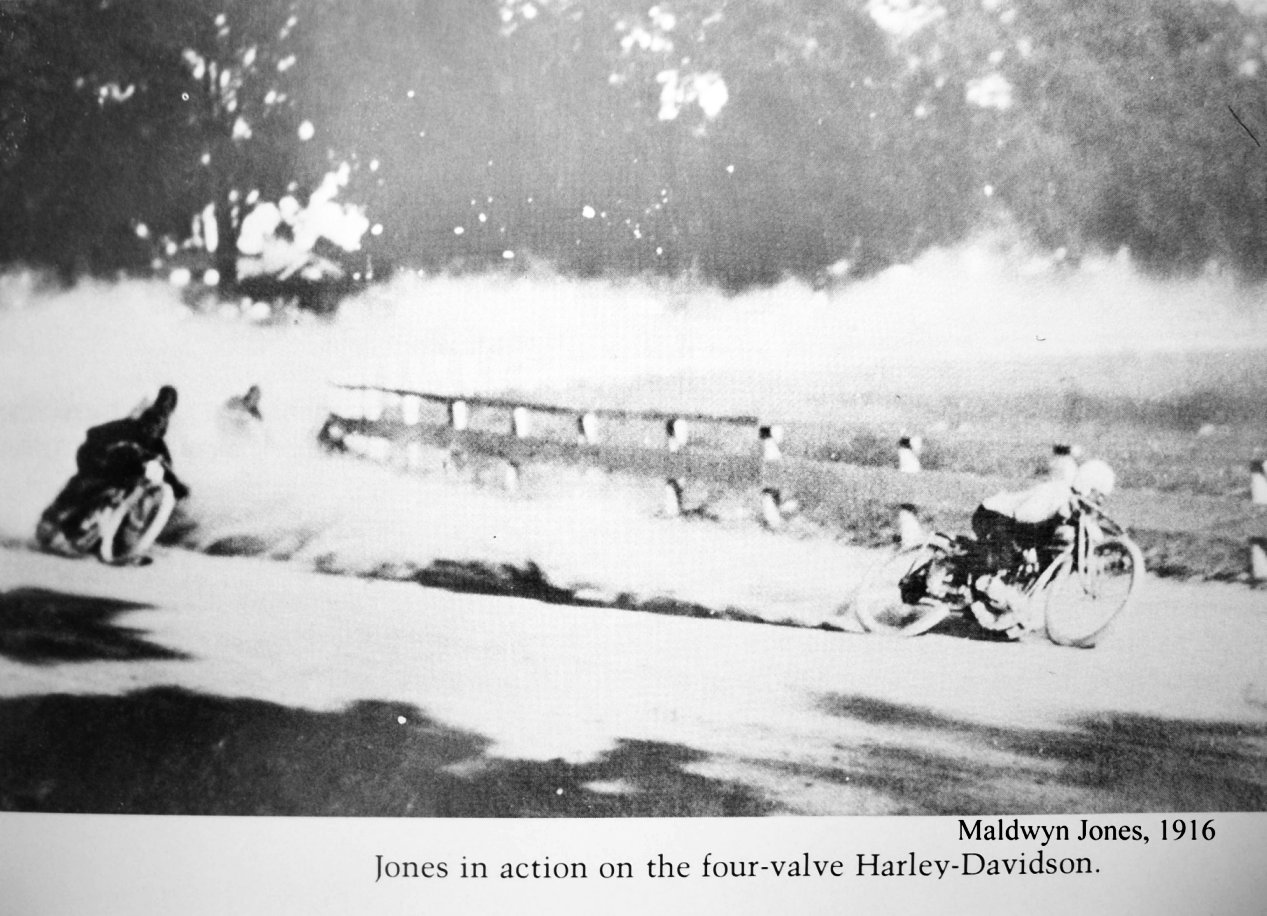 |
| |
|
This is Maldwyn Jones 1916 credited with being the first rider to
broadside a bike. If this is so maybe Maldwyn was the first real speedway
rider. This action shot sure looks like speedway to me. So is this
the origin of the sport? 1916 on a Harley Davidson?
|
| |
| |
| Maldwyn Jones |
| |
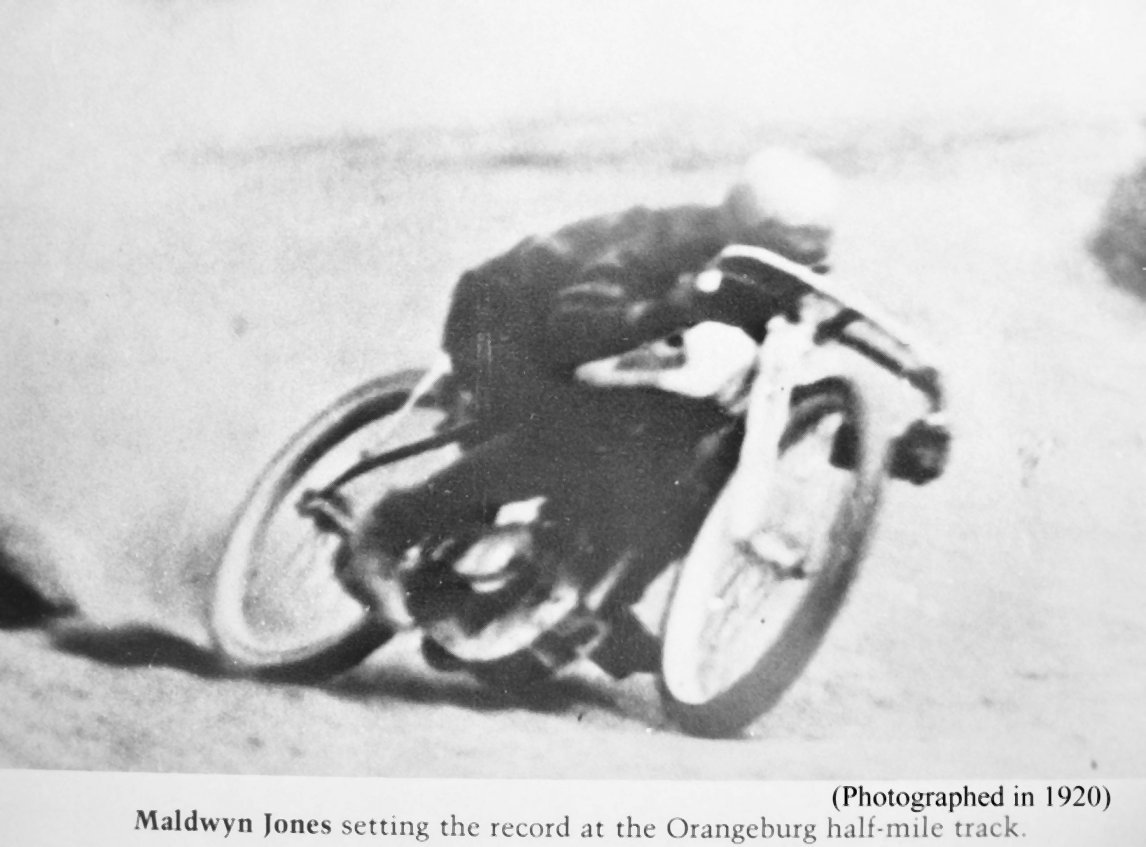 |
| |
| This is 1920 at the Orangeburg race track USA. If this isn't dirt
track/speedway racing then what is it? Have I convinced you that
speedway started in the US and this guy Maldwyn Jones on his Harley
Davidson was the first star of the sport? I am convinced it started
in the USA but of
course we owe a huge debt to the Australians who with Johnnie Hoskins
brought speedway to Britain. |
| |
| |
| Eddie Brinck |
| |
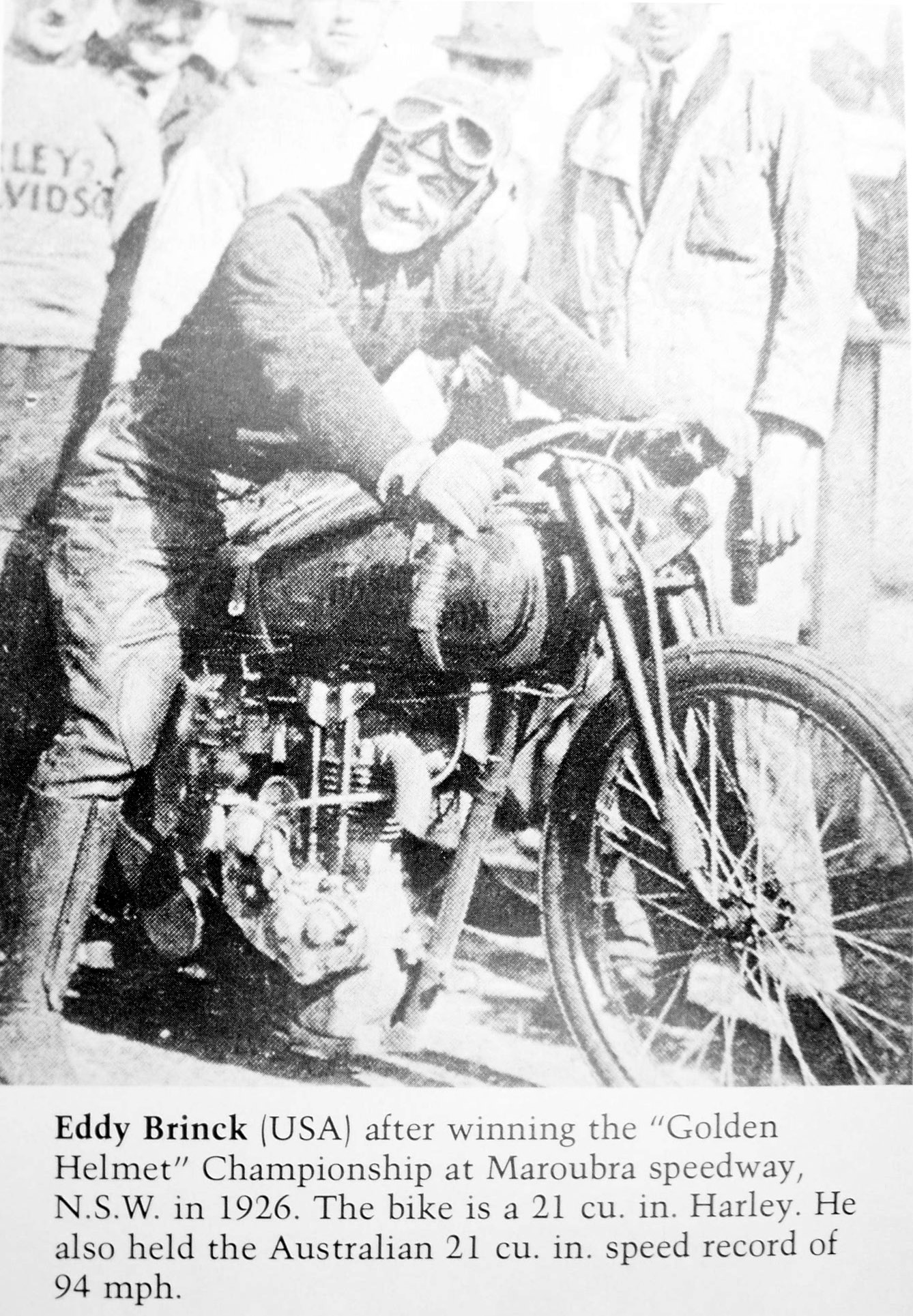 |
| |
| American rider Eddie Brinck visited Australia in 1926 and won many of his
races against the Australians another clue that America was ahead of the
game in speedways early days. The US riders had great bikes, Harley,
Indian and later the Crocker. |
| |
|
Whomever invented speedway and I have to go for the USA, it is obvious
that Australia played a major part in bringing the sport to the whole
world. The UK became it's main base and then Scandinavia and Poland
were hotbeds. The sport needs its roots examining properly and
credit given to its founders (USA I say). Let us hope the sport continues
long into the future, now that we think we know its roots.
|
| |
| |
|
| |
| |
|
Indian
|
| |
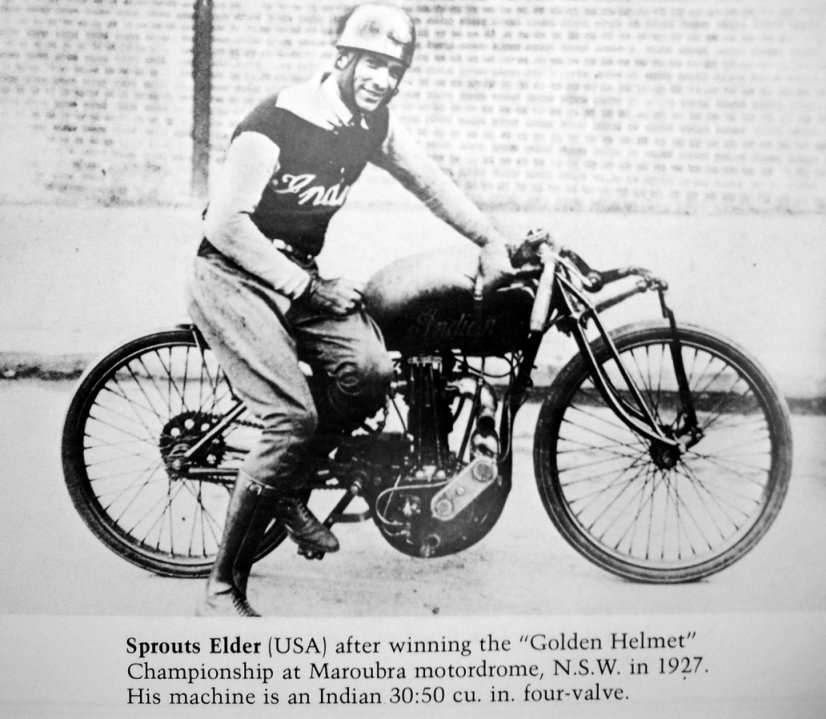 |
| |
|
The USA's Sprouts Elder aboard his 1927 Indian dirt track machine
|
|
|
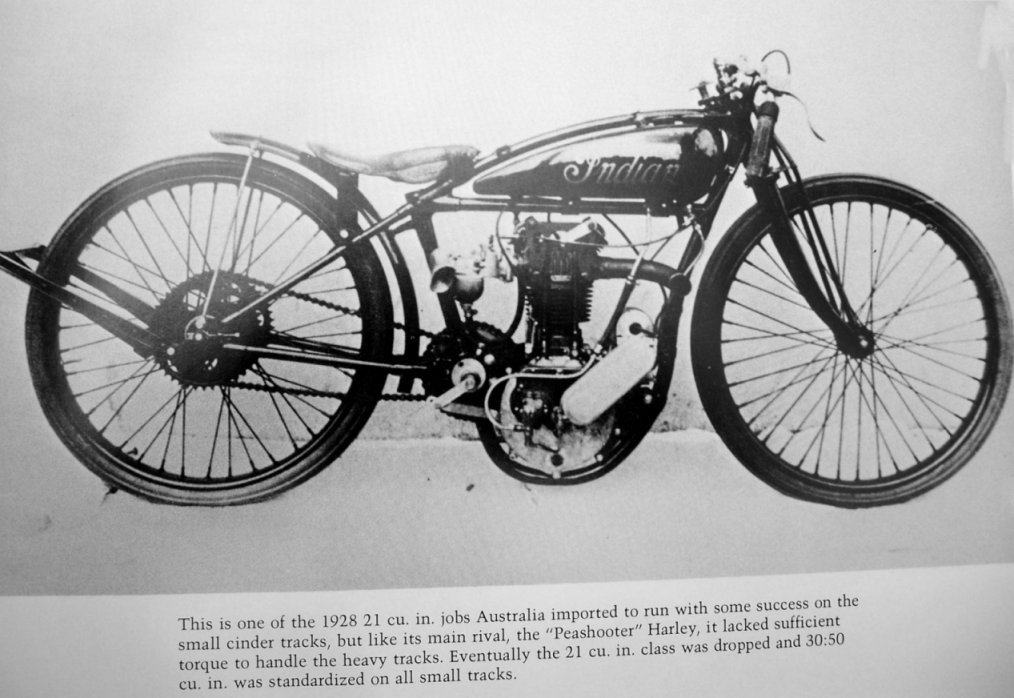 |
| |
|
Sprouts bike of choice. This Indian was a very potent machine for
its time although is was only 350cc. More evidence that the USA was
leading the way in dirt track racing as Harley Davidson and Indian
produced big v twins bikes for the home market and smaller single cylinder
engines for the dirt track race meetings.
|
| |
| The USA had two bike manufactures Harley Davidson and Indian who were
producing machines capable of speedway racing and they had been doing this
since the early days of the new century. It is quite easy to imagine
the American owners of these powerful machines stripping them down and
taking them out onto dirt tracks around Los Angeles and other American
cities. Maybe the early attempts in the States weren't organised as
well as the 1923 events at West Maitland Australia who had Johnnie Hoskins
in charge but the evidence is there that the USA were doing what Johnnie
was doing. Who did it first? Who really knows, but my research
points across the Atlantic. Speedway began in the USA that is my
conclusion. The Aussies organised it and took it to Europe in 1928.
You may say "who cares where it started" It was Britain who made it
an international sport and was long time the home of Speedway. |
| |
|
I wish I had a time machine and could visit Australian pre 1923 and
America earlier than that to watch the pioneers of the sport riding their
bikes. To be able to inspect the tracks and the machines would be
great. The earlier riders would have been amazed to hear that
120/130 thousand watched a Polish World Final in 1973 and thousands turned
out every week for local league matches in Britain, Sweden, Poland etc.
|
| |
| The USA should support the sport it helped to create in 1900- 1923 and
maybe that we are now into the 21st century the "Big Country" will.
There has always been great American riders although 80 years later we are
still awaiting an American promotional ace like Johnnie Hoskins to lead
the sport out of the current slump. So come on USA the sport you
created needs you to lead it now. |
| |
|
I expect many will disagree with me in my piece above. If you
disagree why not have your say here. I will reproduce what you have to say
here without amendment Email me
John
|
| |
| |
|
| |
| |
| Brisbane Cricket Ground
1904 |
| |
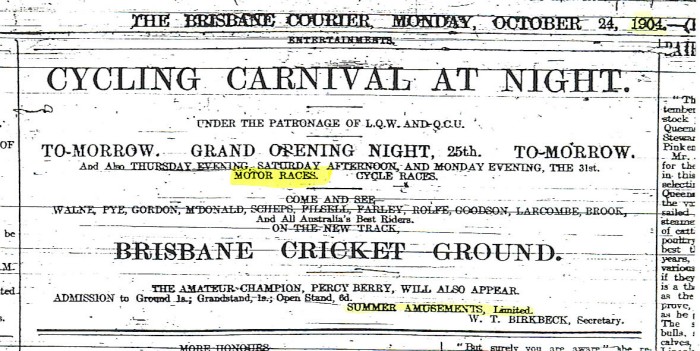 |
| Courtesy of Norman Jacobs |
| |
| "Evidence" of motorcycle and cycle racing
in the Brisbane area. In 1904 I doubt that any of the
motorcycle engines would develop enough torque to allow the riders
to slide properly but everything has to start somewhere. |
| |
| |
|
| |
| |
1916 Townsville
ANA
Show Grounds |
| |
 |
| Courtesy of Norman Jacobs |
| |
| |
|
| |
| |
|
Deagon Queensland
Australia |
| |
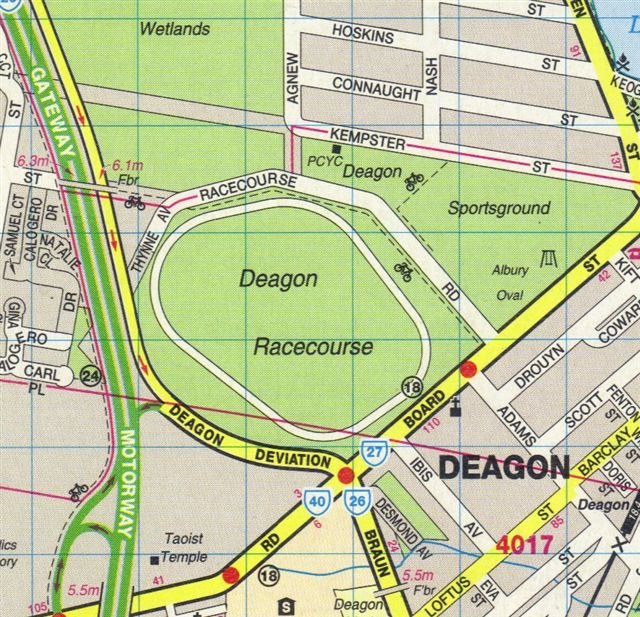 |
| Courtesy of Tony Webb |
| |
| The following images etc are from Tony
Webb in Australia showing very early action on the Australian
track at Deagon in Queensland |
| |
|
Tony Webb says: A visit today to the Sandgate Historical Society
Museum near Brisbane unearthed an archive of material on the
early days of speedway in Queensland. The facts that emerge
from the records held in Sandgate, place Queensland as the
place where the foundations of speedway were laid. From
1921-1928 no less than 14 State championships and 6
Australian solo championships were held. future stars of the
standing of Spencer Stratton, Tommy bBnstead, Charlie Spinks,
Arthur Yenson and Stan Lupton are just a few of the names that
appear.
the claims from Maitland and other venues cannot be on the
same page as Deagon in light of what took place at Deagon. The
purists will say Deagon (a suburb of Brisbane in Queensland) was a track too big to be
a speedway,
well Maitland was too big also.
|
| |
| |
| First
Meeting At Deagon |
| |
| 5th November 1921 |
| |
 |
| Courtesy of Tony Webb |
| |
| John says: The newspaper advert, shown
above, is headed "Great Motor Cycle Carnival". Well
what would you call it. Remember the descriptive word,
"Speedway" had not been coined back in 1921. |
| |
|
Deagon Race Course, a place in speedway history.
Track racing was introduced on the one mile grass surface
at Deagon Race course in Brisbane on November 11 1921.The venue
still exists to this day and is close to the Deagon rail station.
The first meeting was the Queensland 3 mile and five mile solo
Championship and the Queensland 5 mile sidecar championship. |
| |
|
It is
important to take into account that in the 10 year history of the Deagon track 14 QLD State Championships and six Australian
championships were held. The first official ACCA sanction
Australian Championship was staged on August 8 1928 won by New
Zealander Jack Arnott.
Eight of the riders in the first meeting at the Ekka on October 16
1926 were Deagon riders.
All
classes of racing, solos sidecars and were programmed. |
| |
|
There
are at least 20 riders including three New Zealanders who started
their careers at Deagon.
I would suggest
that considering the above, Deagon has a claim to be the birth
place of Australian speedway.
It is also
noteworthy that the research has been done by a local history
researcher, not a speedway identity.
Press cuttings and photos are available in excess of any other
track of that era. Tony Webb |
| |
| John Says: A
great read Tony. It's like discovering the "holy grail" when
you find something out, like this! Whether it will shake
loose the ever-prevailing "origins" version of Johnnie Hoskin's
starting it all at Maitland in 1923 is another matter and what
about the USA's pre Hoskins claims? It is safe to
say that Johnnie Hoskins definitely had what it took to promote
the fledgling sport properly and without him "cottoning on to it"
in Maitland, maybe it would never have reached us in Europe.
My thanks to JH for bringing speedway to my home town Newcastle in
the UK. |
| |
| |
| Early Pictures From Deagon |
| |
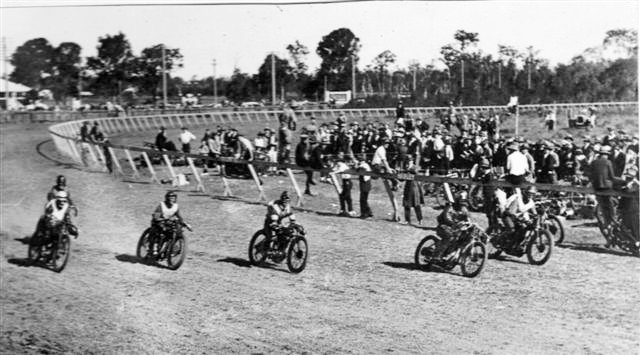 |
| |
| A great picture from the early 1920's |
| |
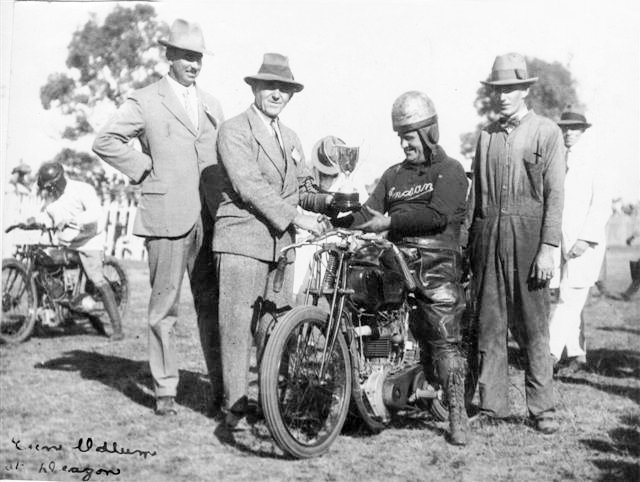 |
| |
| Deagon 1926: Ernie Odlum aboard an
American Indian machine |
| |
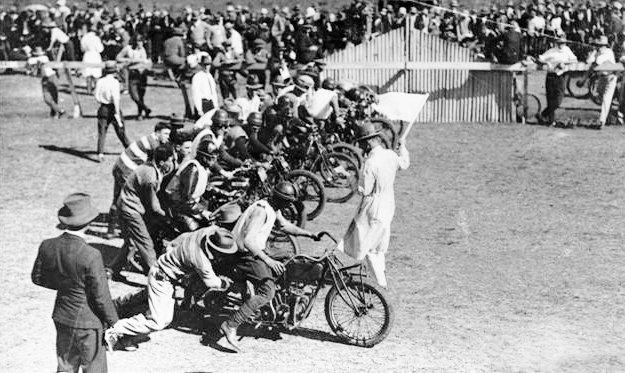 |
| |
| This 1920s picture of a heat start, shows all bikes in
need of
a push to get underway. I love the handlebars of the bike
nearest to the camera. Clutch starts and starting gates came
later |
| |
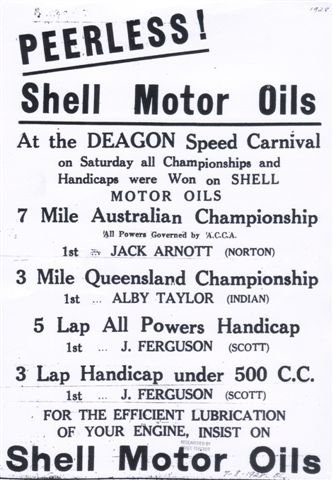 |
| Deagon Arnott Advert |
| |
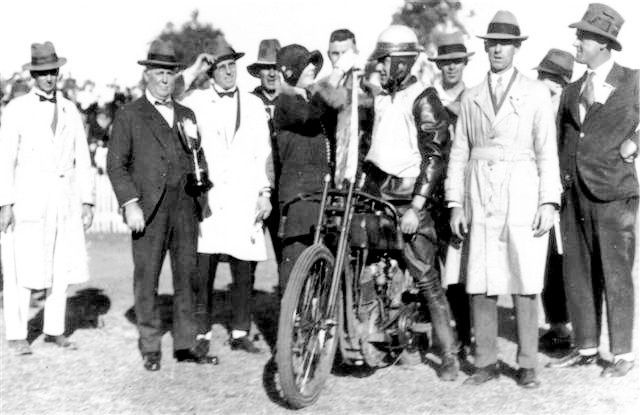 |
| |
| Frank Pearce: surrounded by 9 out of 10 people wearing
hats! maybe the guy with a bare head also had his hat in his hand!
My apologies to Tony Webb for drawing any attention away from
Frank (also wearing a crash HAT) Not sure what make of bike Frank
was on but by the shape of the handle bars I would say he was on
an American bike a Harley or an Indian. The front forks look
different to me to any other bike pic I have seen so maybe the
bike was a hybrid of some sort? |
| |
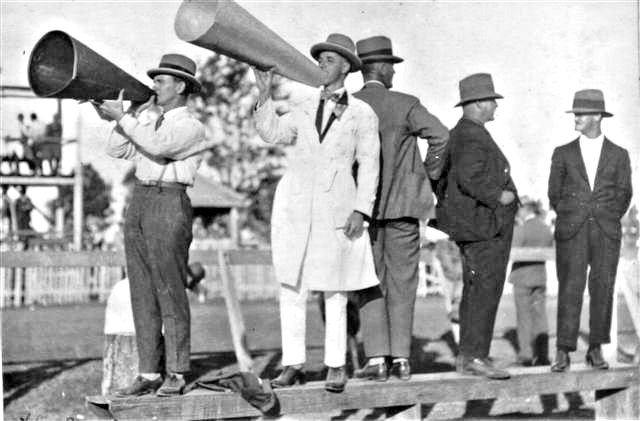 |
| |
| Deagon Announcers before electricity arrived in the suburb
of Deagon in Queensland. I have been at many modern tracks
where megaphones would probably have been just as good as the
stadium's tannoy announcements. These announcers pictured,
would have had to wait until any bikes revving up had subsided.
I know this picture is already on the website...somewhere? but it
fits here so well, I have included it again. Can I just say
that hat wearing in them days must have been compulsory! |
| |
| |
|
| |
| |
Tony Webb
In
2014 says |
| |
|
My first project for
2014 is a history of Deagon Race course 1921-1931 in
conjunction with Sandgate Historical Society.
I consider Deagon to be a forgotten part of motorcycle/
Sidecar /car racing history for the following reasons.
Consider
the following:
- |
| |
|
24 meetings were held 1921-1931.
It is important to take into account that in the 10 year
history of the Deagon track 14 QLD State Championships and six
Australian and Australasian Championships were held. The
official status of the early titles are unknown as the first
recorded Australian Auto cycle Association sanctioned title
was the 7 mile in 1928.
The
first official ACCA sanction Australian Championship was
staged on August 8 1928 won by New Zealander Jack Arnott. |
| |
|
Eight of the riders in the first meeting at the Ekka on
October 16 1926 were Deagon riders.
All classes of racing, solos sidecar and cars were programmed.
There are at least 20 riders including three New Zealanders
who started their careers at Deagon. Frank Pearce, Frank
Arthur, Noel Johnson, Stan Lupton, Vic Huxley all started at
Deagon. |
| |
|
The
first Excelsior jap was raced at Deagon in 1927.
The organisation by the Indian, Brisbane and Queensland MCC
was far advanced on other more publicised venues.
Newspaper reports indicate crowds of 4,000-15,000
I would suggest that considering the above, Deagon has a claim
to be the birth place of Australian speedway. |
| |
|
It
is also noteworthy that the research has been done by a local
history researcher, not a speedway identity.
Press cuttings and photos are available in excess of
any other track of that era. |
| |
| Tony
says: If anyone has recollections from stories of their
families relating to this period I would like to know. |
| John says: send
me an email and I will pass it on to Tony
John |
| |
| For Tony Webb's Books, See The Websites "Books"
Page |
| |
| |
|
| |
| |
|
Sand Racing
|
| |
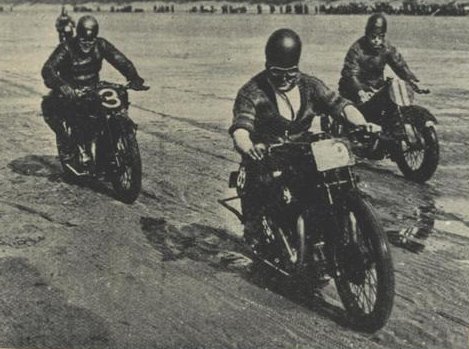 |
| |
|
Sand Racing at Southport Merseyside
|
| |
| |
| Sandracing At Saltburn & Redcar
1905 Onwards |
| |
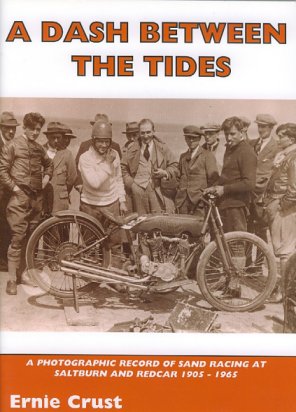 |
| |
| This book (now out of print) features sand racing at Saltburn & Redcar on
Teesside. The book spans the period 1905 - 1965. The rider on
the cover is Freddie Dixon, the picture was taken in 1921. |
| |
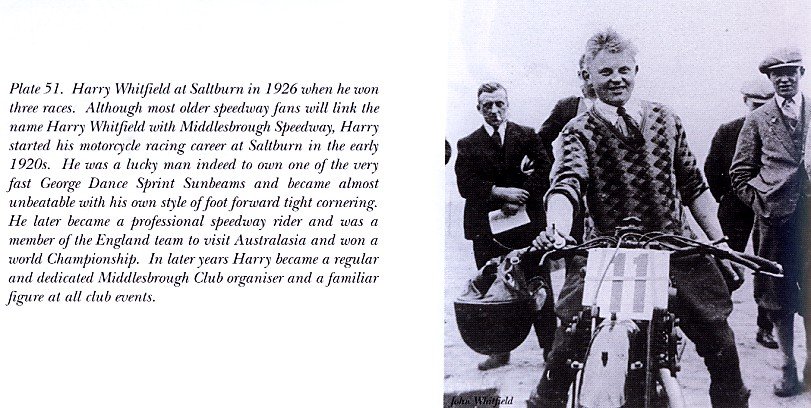 |
| |
| Harry Whitfield on the beach at Saltburn in 1926. |
| |
| |
|
| |
| |
Martin JAPs
Pre
1920 |
| |
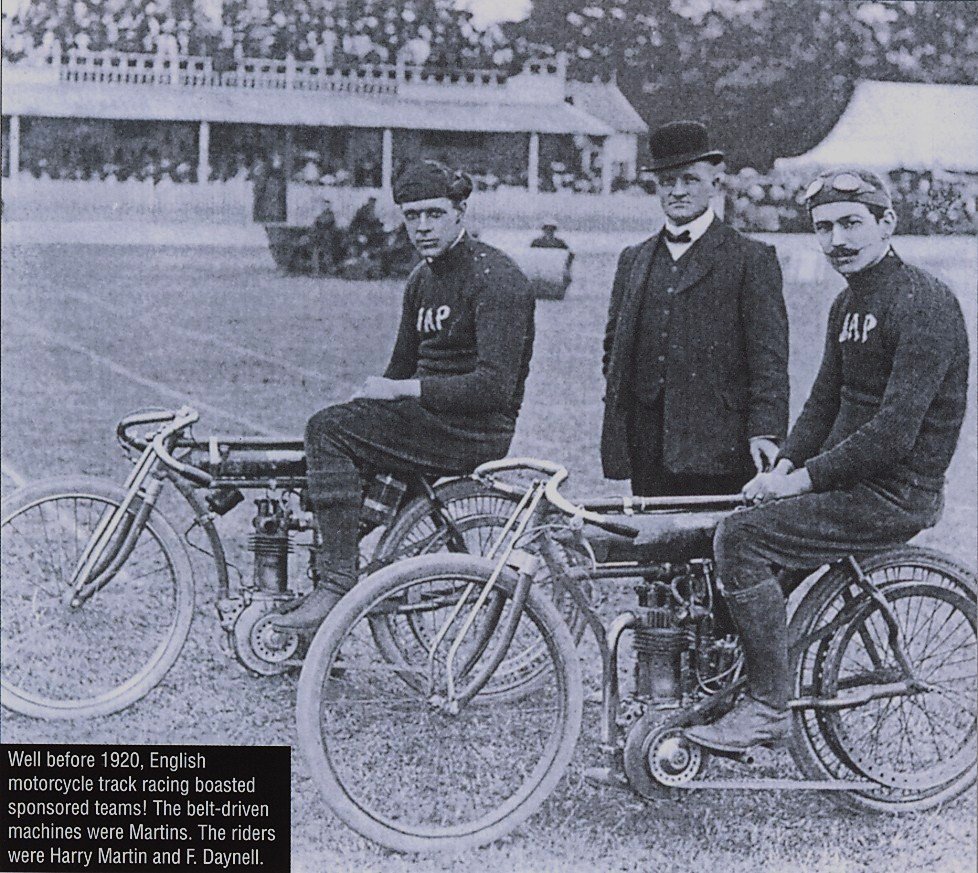 |
| |
| |
|
| |
| |
|
Dirt/Grass Racing
|
| |
|
Circa 1909/10 Grasstrack Racers |
| |
 |
| Courtesy of William King |
| |
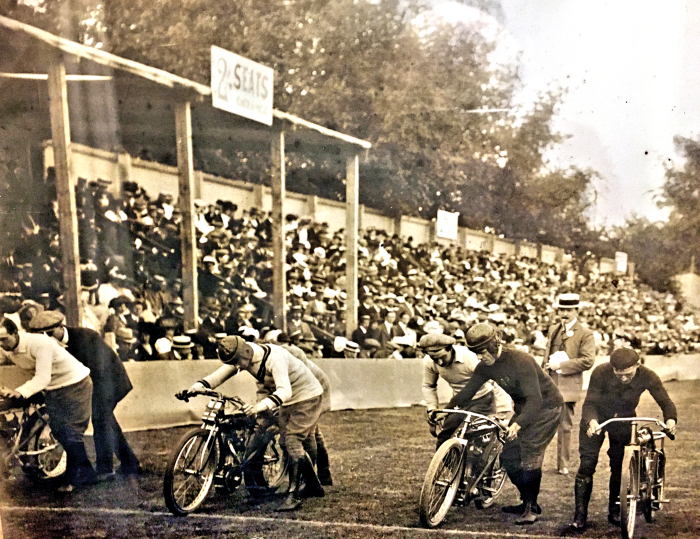 |
| Courtesy of William
King |
| |
| Willam
has sent me the 2 pics shown above. He says: Good evening
John,
I am wondering if you might be able to help me to identify the
location of the grass track being raced on by my Great
Grandfather in the white sweater please.
And/or if possible any of the other riders or bikes.
I know nothing except that the white jersey has the badge of
the British Motorcycle Racing Club which formed in 1909.
Any help greatly appreciated and many thanks in advance but
also appreciate that it may pre date your specific speciality.
William
|
| John says: My thanks to William.
His photos are great. The machines are typical from around
2012-2015. They are belt driven and the front forks show the
bikes were developed from their "bicycle roots". I think the
big rider second from the right is wearing a JAP jersey so
presumably his bike is an early belt driven JAP. Another
point of interest, the sign on the grandstand says "2 shilling
seats," quite a lot for pre Great War patrons to pay. If
anyone can throw any light on these photos please email me
John |
| |
|
| |
| |
| Bill Minnick |
| |
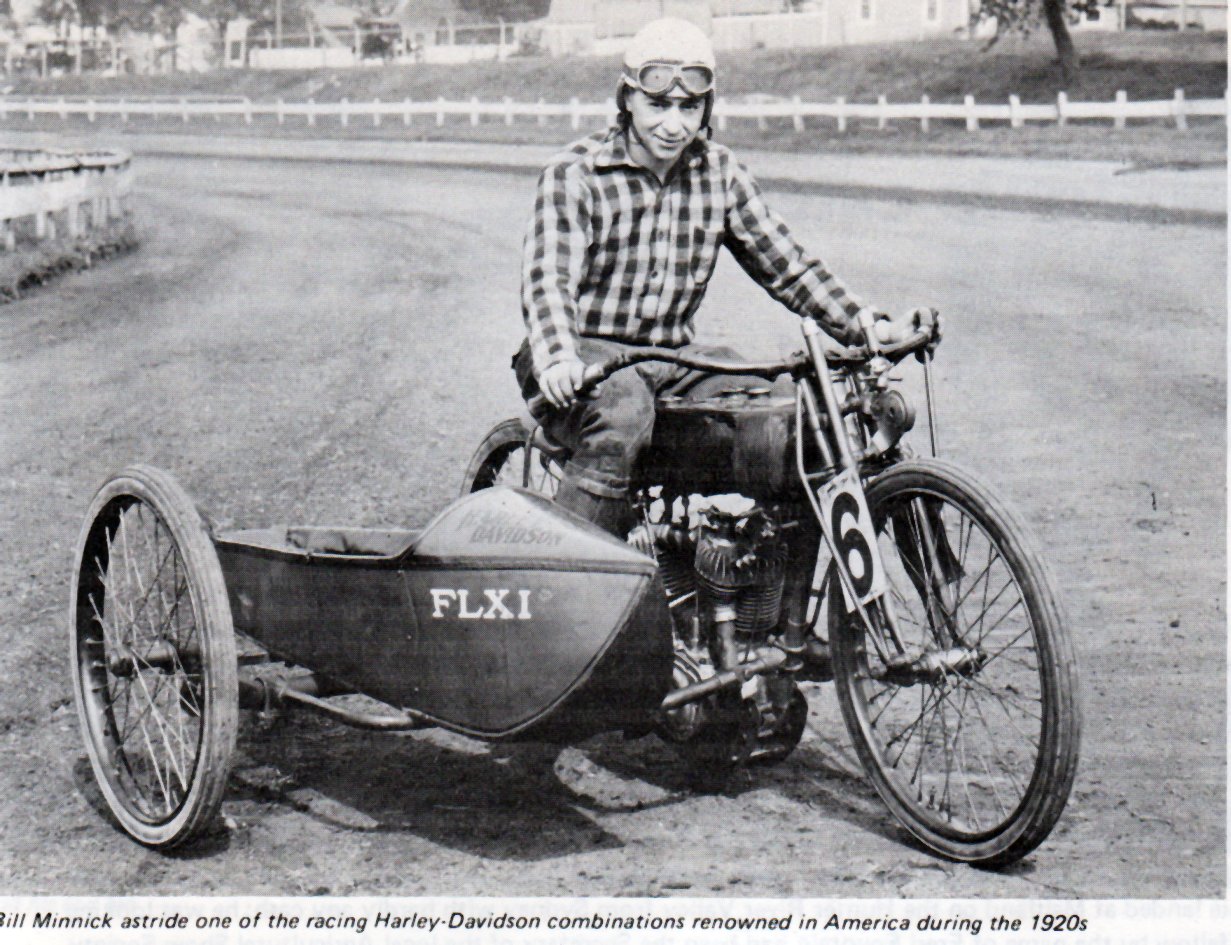 |
| |
| |
|
| |
| |
|
USA (1920) At Dodge City
|
| |
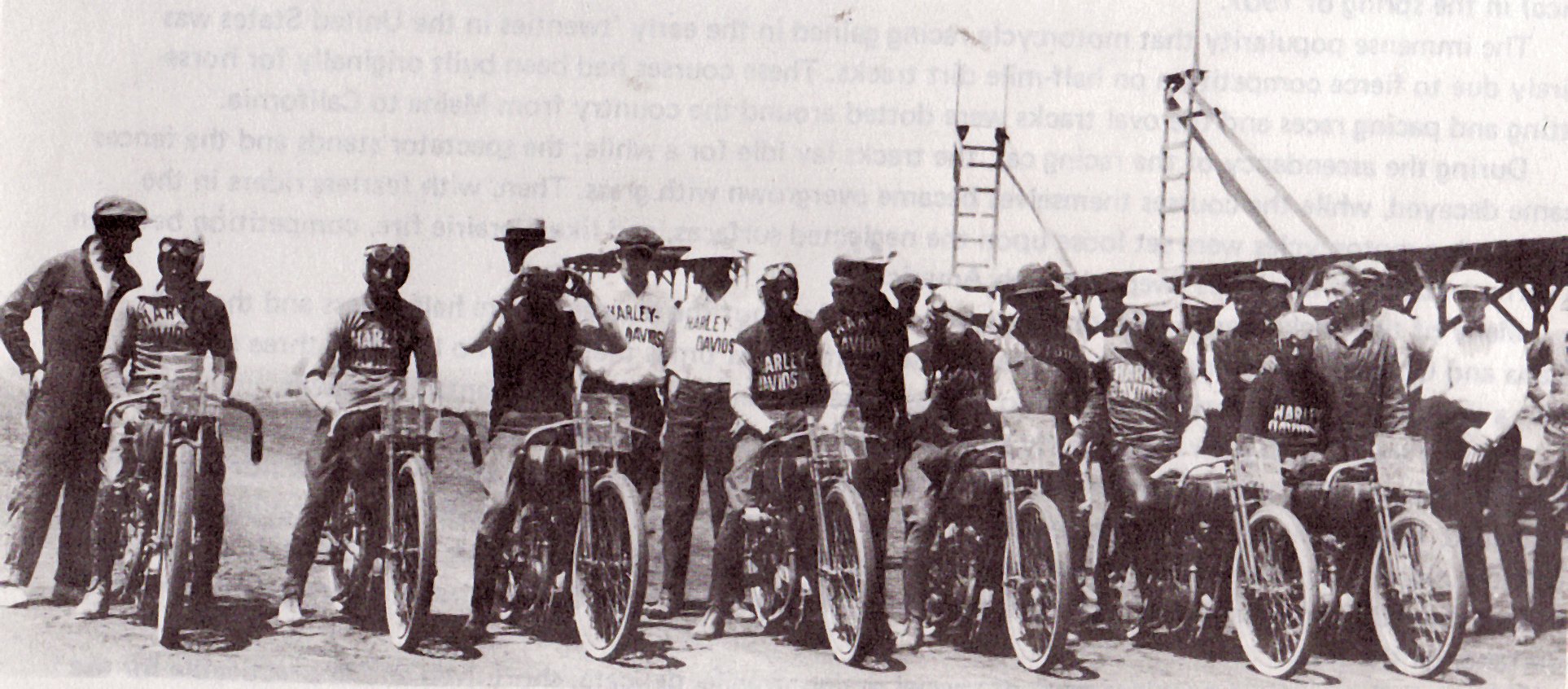 |
| |
| I expect the Dodge City races were held
on grass but who really knows? No truth in the rumour that
"Wyatt Earp" was in charge of security! |
| |
|
Maldwyn Jones, Fred Ludlow, Ralph Hepburn, Jim Davis, Ray Weishaar,
OttoWalker, Walter Higley
Maldwyn Jones is said by some to have been the first to master the art of
broadsiding, if so then he must have had a massive advantage over his
rivals.
If the date I have is correct (1920) then this stakes an USA claim as
inventors of the sport.
|
| |
| |
|
| |
| |
Grass Tracking In
New Zealand |
| |
| Giffy says: Here are 16 NZ grass
track photos all pre-dating speedway coming to the UK in 1928.
A few pics of early NZ grasstrack racing. giffy
Racing motorcycles on one mile horse tracks was popular in
both New Zealand and Australia prior to the second world war.
Races were anything up to fifteen miles in length and on the
rough and ready tracks a great deal of stamina was required.
Throw in the almost rigid frames, the heat and the dust, the
scalding oil coming out of the engines and the twelve inch
long exhaust pipes bellowing just below the ears it was no
game for the feint hearted. The money wasn’t too bad though, a
successful rider could earn fifty pounds for a days work when
I guess the average wage for a tradesman would be two or three
pounds a week.
|
| |
| John says: I like the notion that grass trackers added
cinders etc to worn parts of their grass tracks and eventually
decided that an all cinder/shale etc track could cope with regular
racing whereas with grass, the location couldn't be used so often,
so grass track racing moved around for fresh tracks, whereas, Dirt
Track/Speedway was all about having permanent homes/stadia with
floodlights and other amenities to pull in the crowds. |
|
|
|
| Dave Gifford's Photos
(16) |
| |
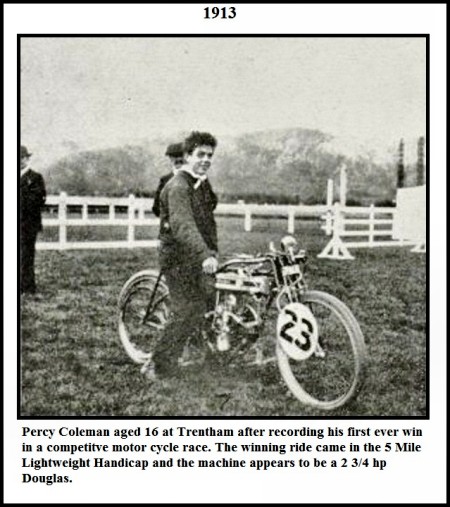 |
| |
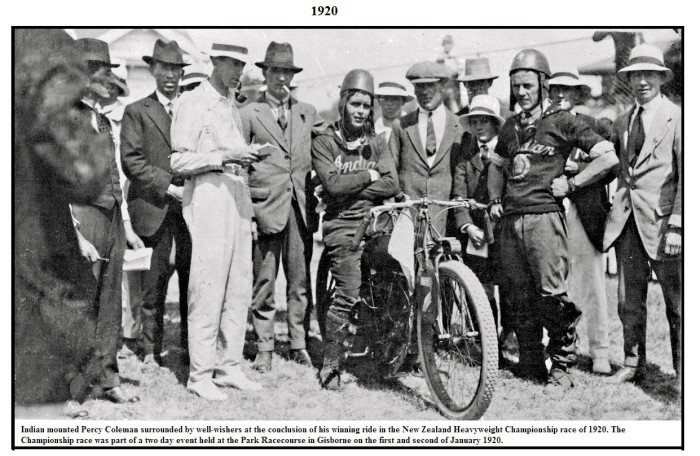 |
| |
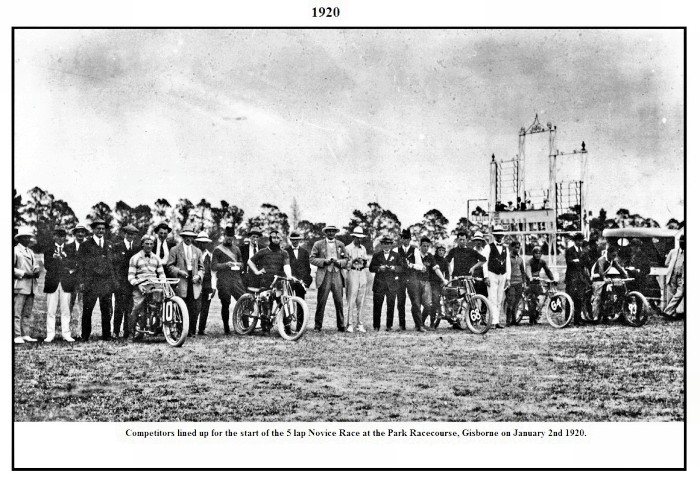 |
| |
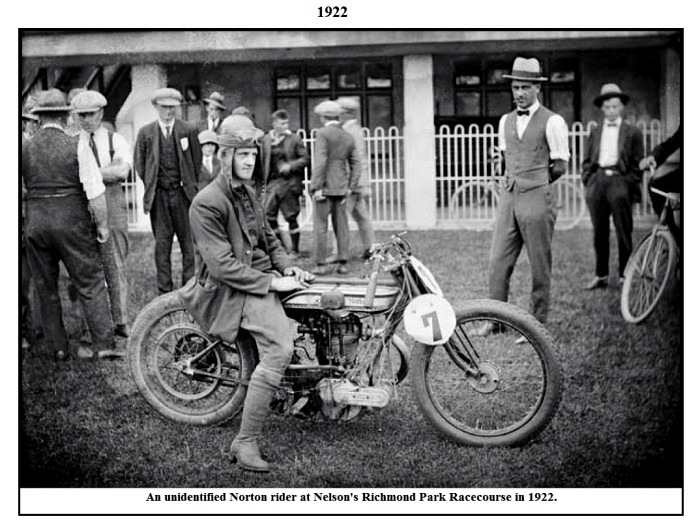 |
| |
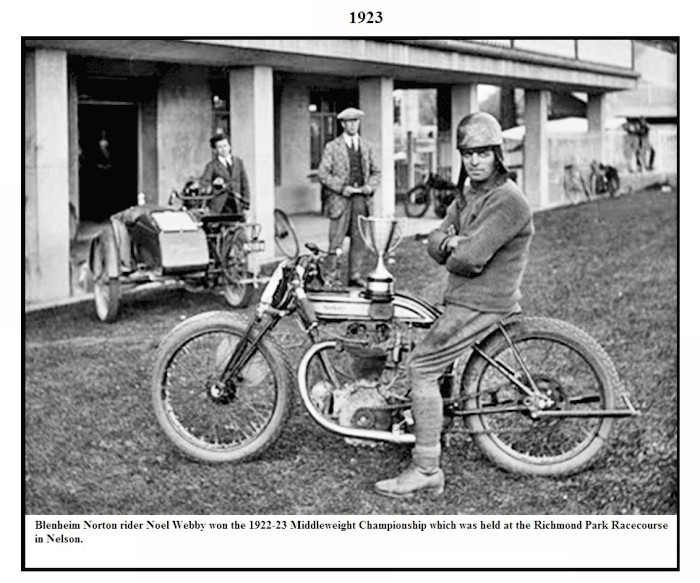 |
| |
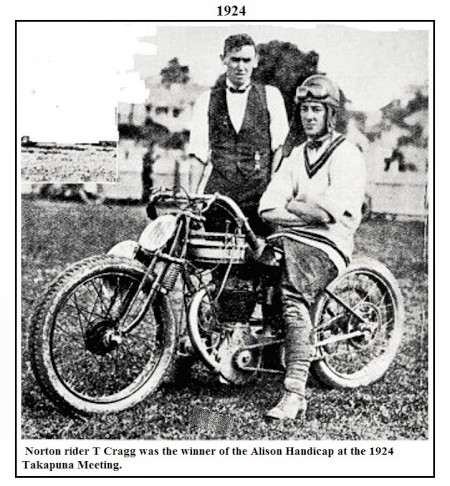 |
| |
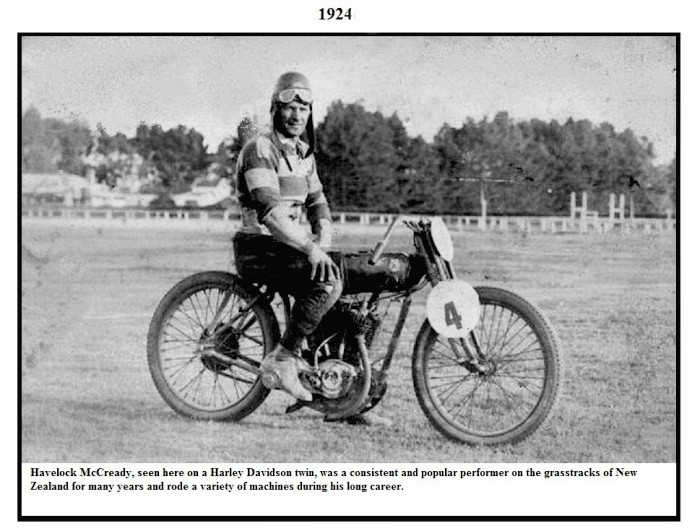 |
| |
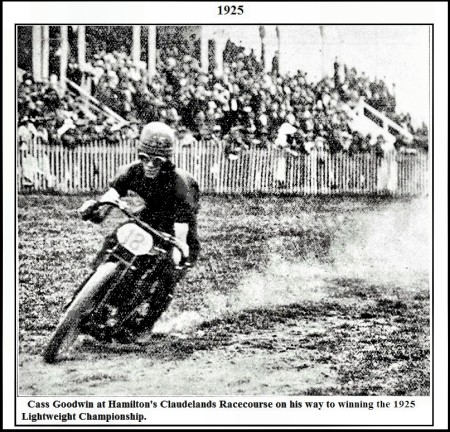 |
| |
 |
| |
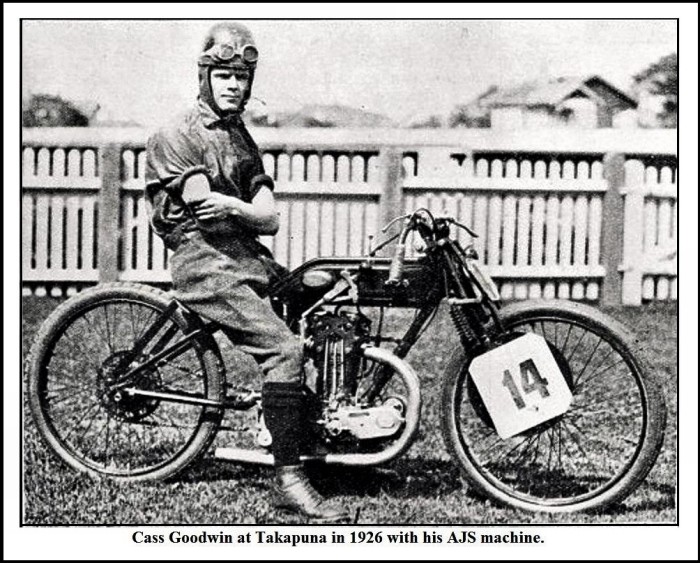 |
| |
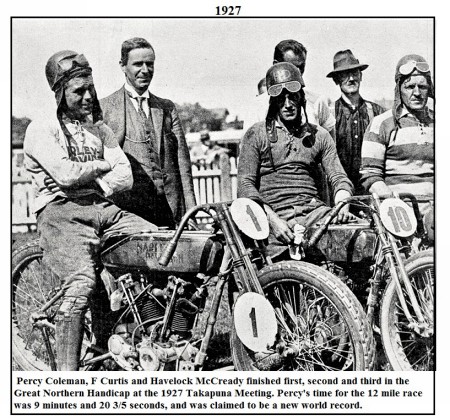 |
| |
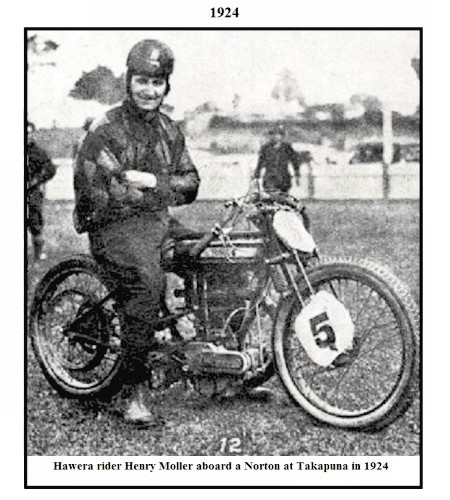 |
| |
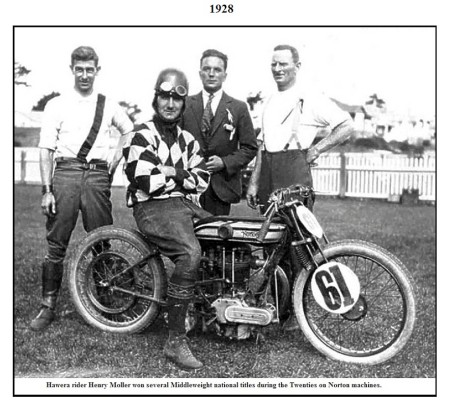 |
| |
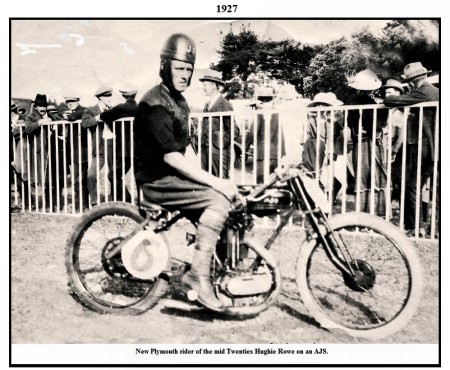 |
| |
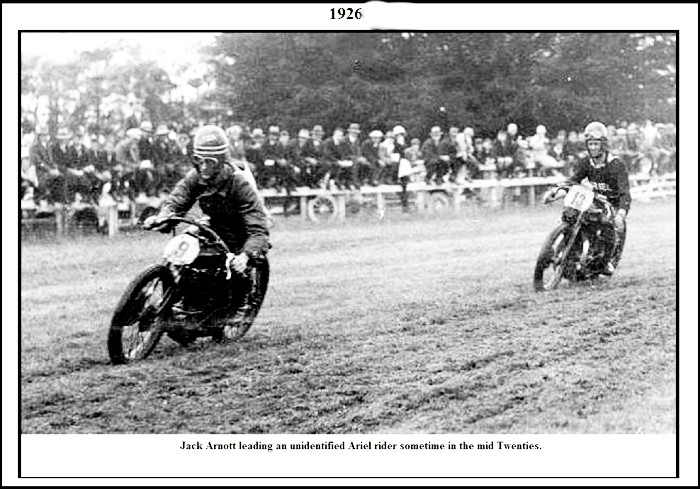 |
| |
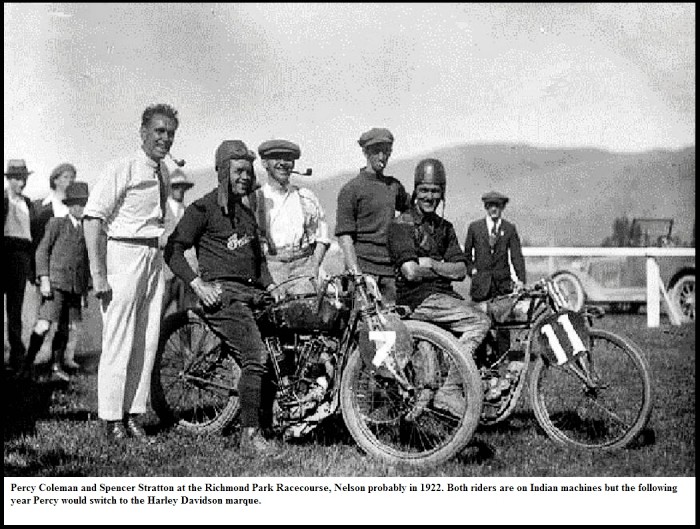 |
| |
| My thank yous to Dave Gifford for the 16
photos shown above. Thumbing through these pictures I set
eyes on the AJS pictures. In the middle of the 1920s AJS
bikes looked the part more than the other makes. |
| |
|
|
|
| |
| |
|
Road
Racing & TT
|
| |
 |
| |
|
|
|
|
| |
| Do you have any comments/photos to share? email me
John |
| |
|
|
| |
|
| The contents of the site are © and should not be
reproduced elsewhere for financial gain. The contributors to this site
gave the pictures and information on that understanding. If anyone has
any issue or objections to any items on the site please
e-mail
and I will amend or remove the item. Where possible credit
has been given to the owner of each item.
|


